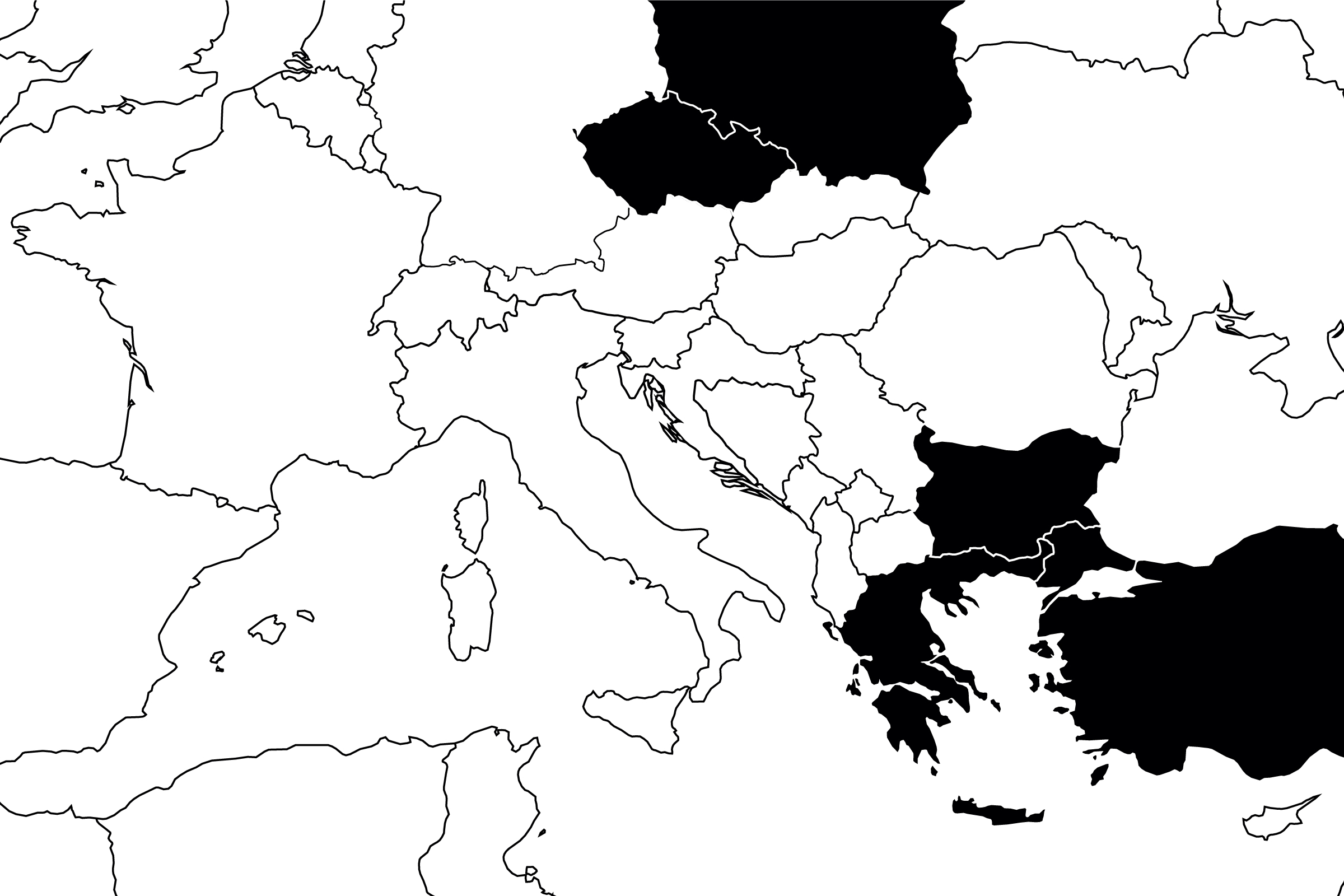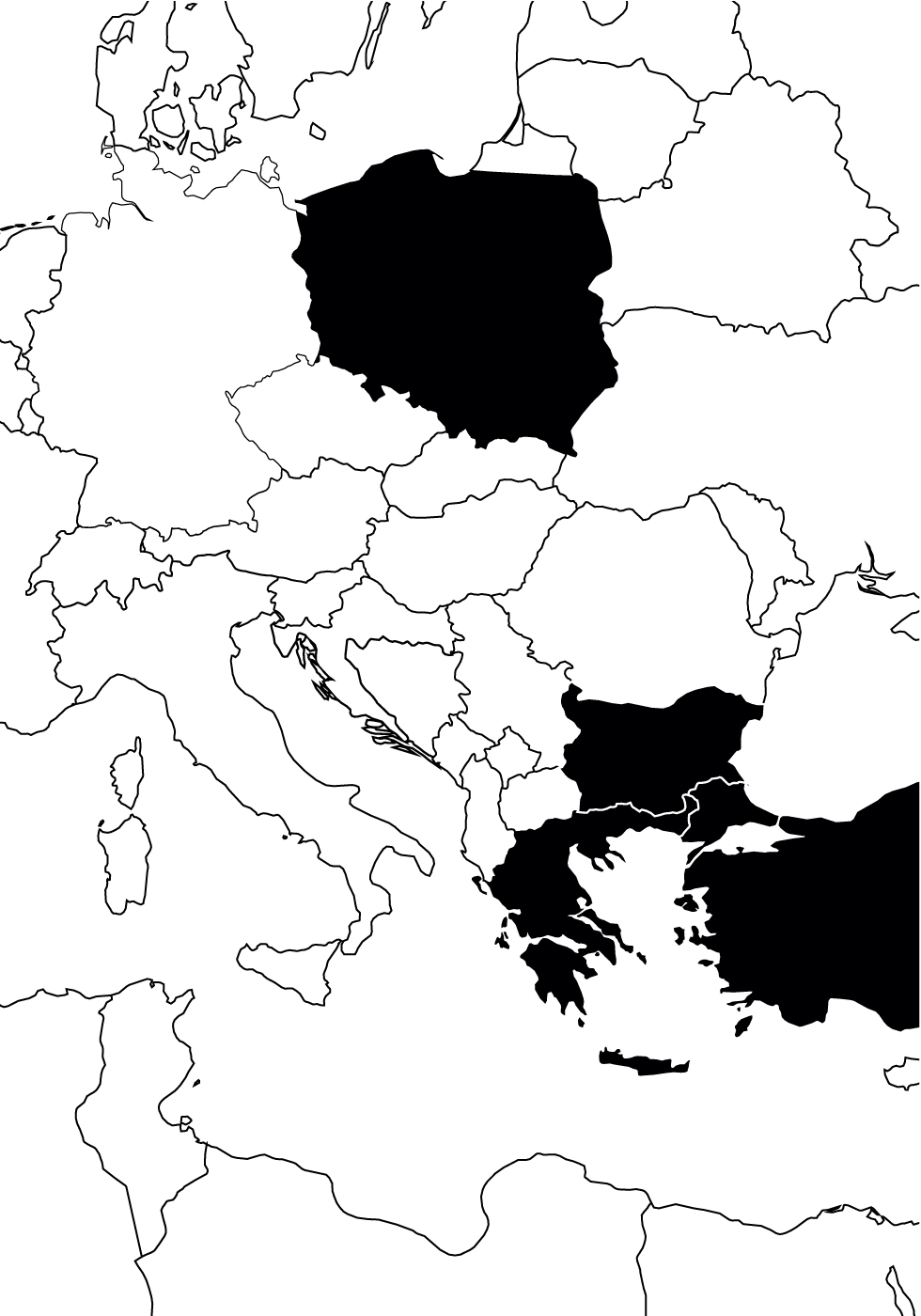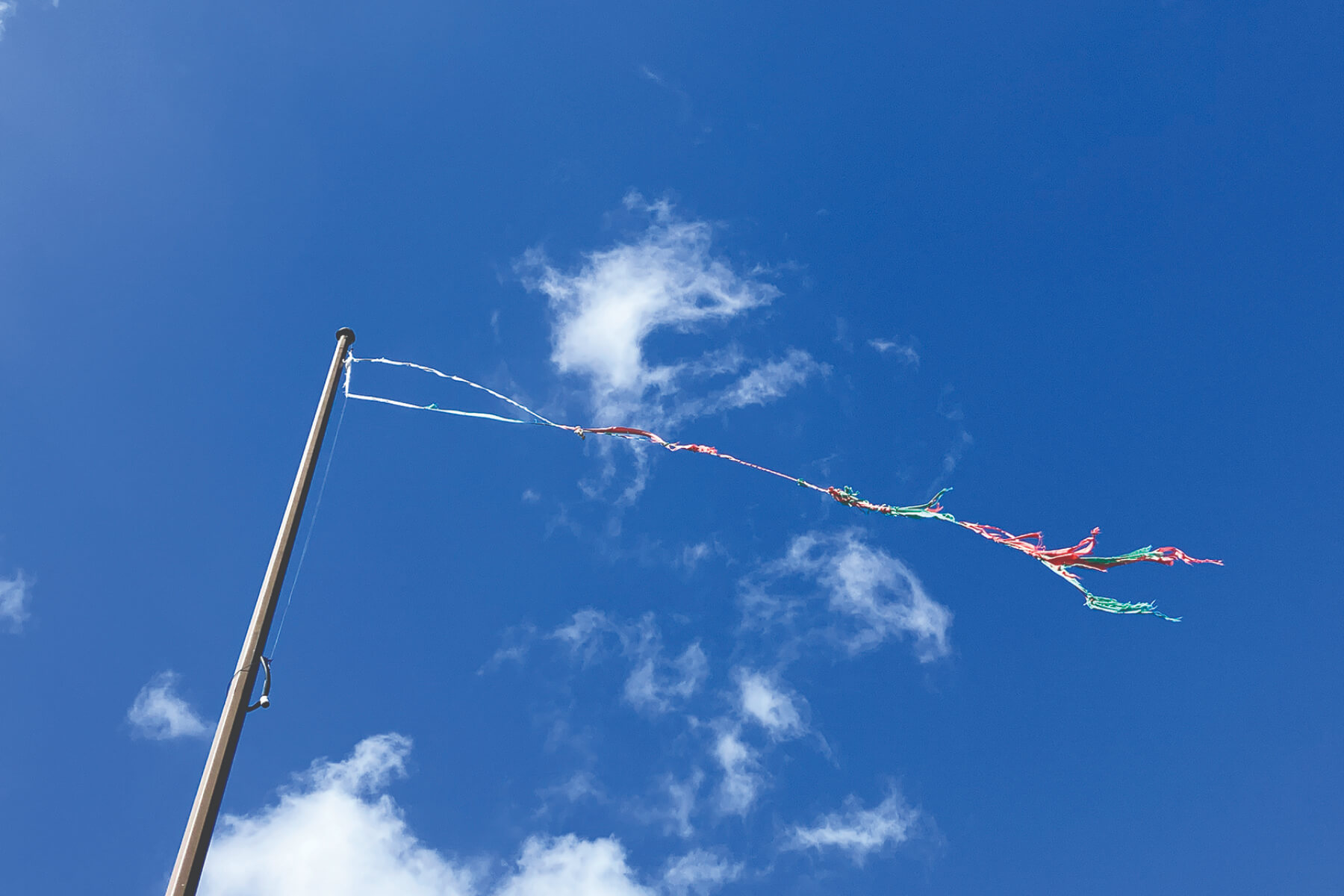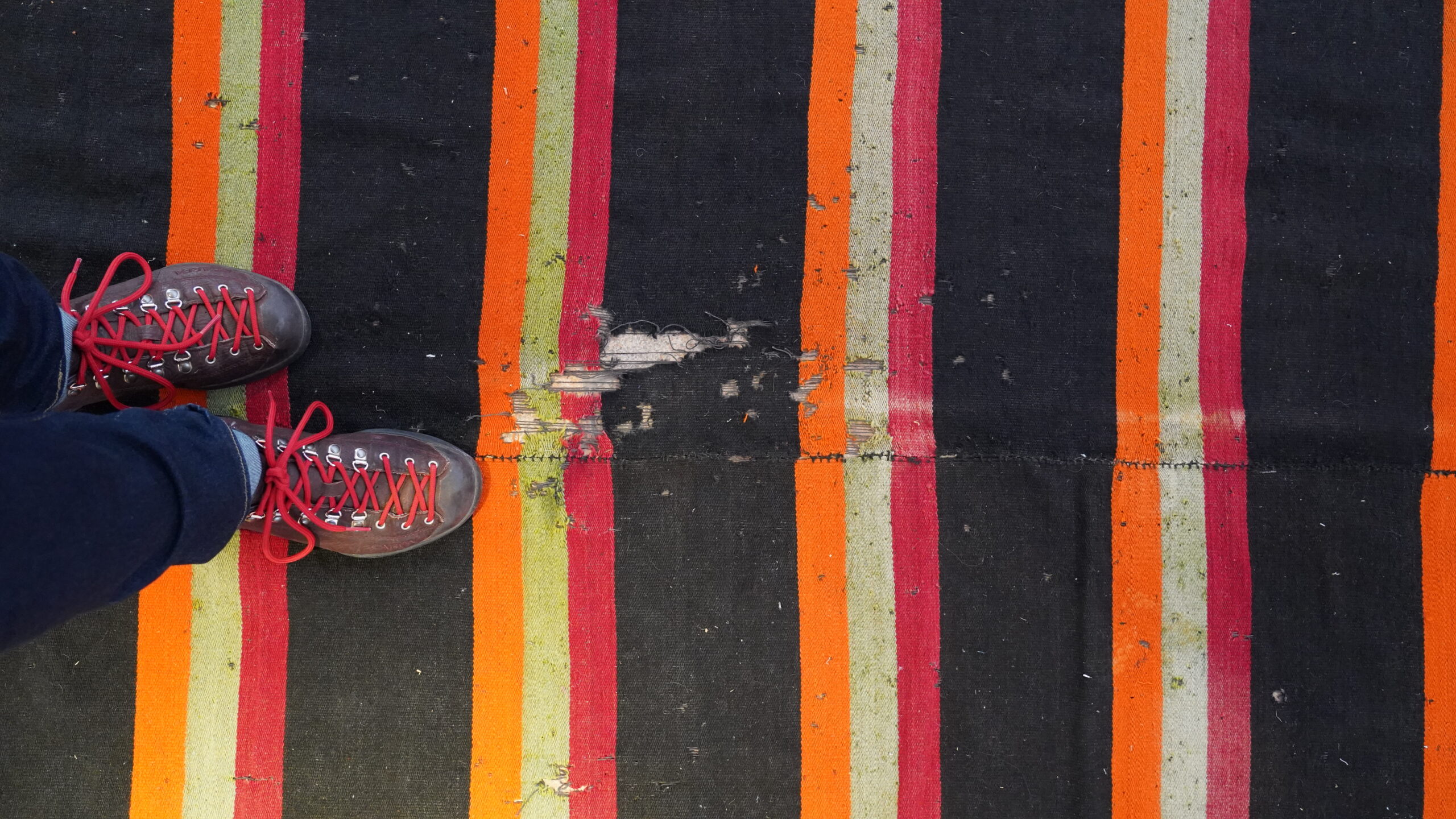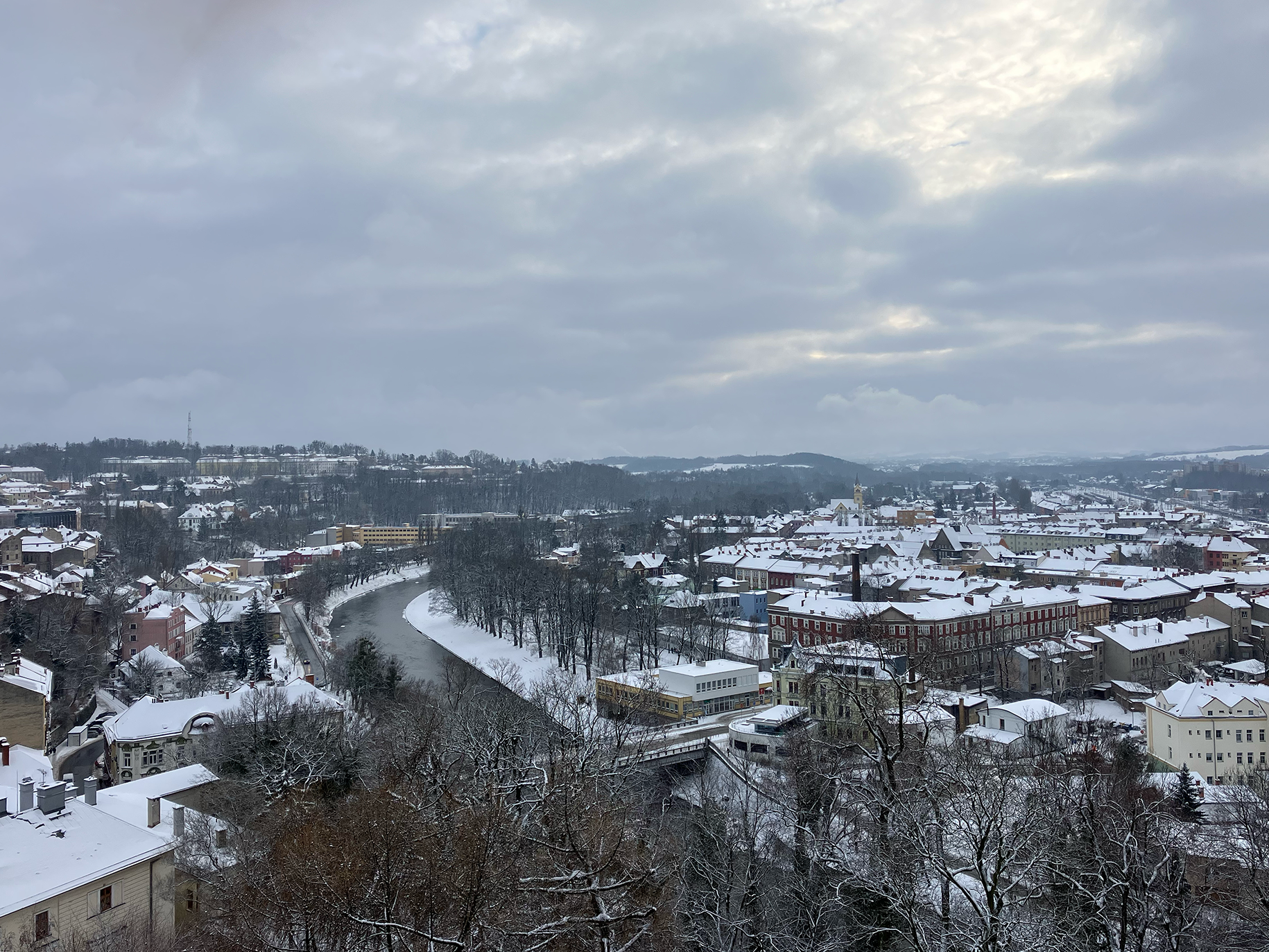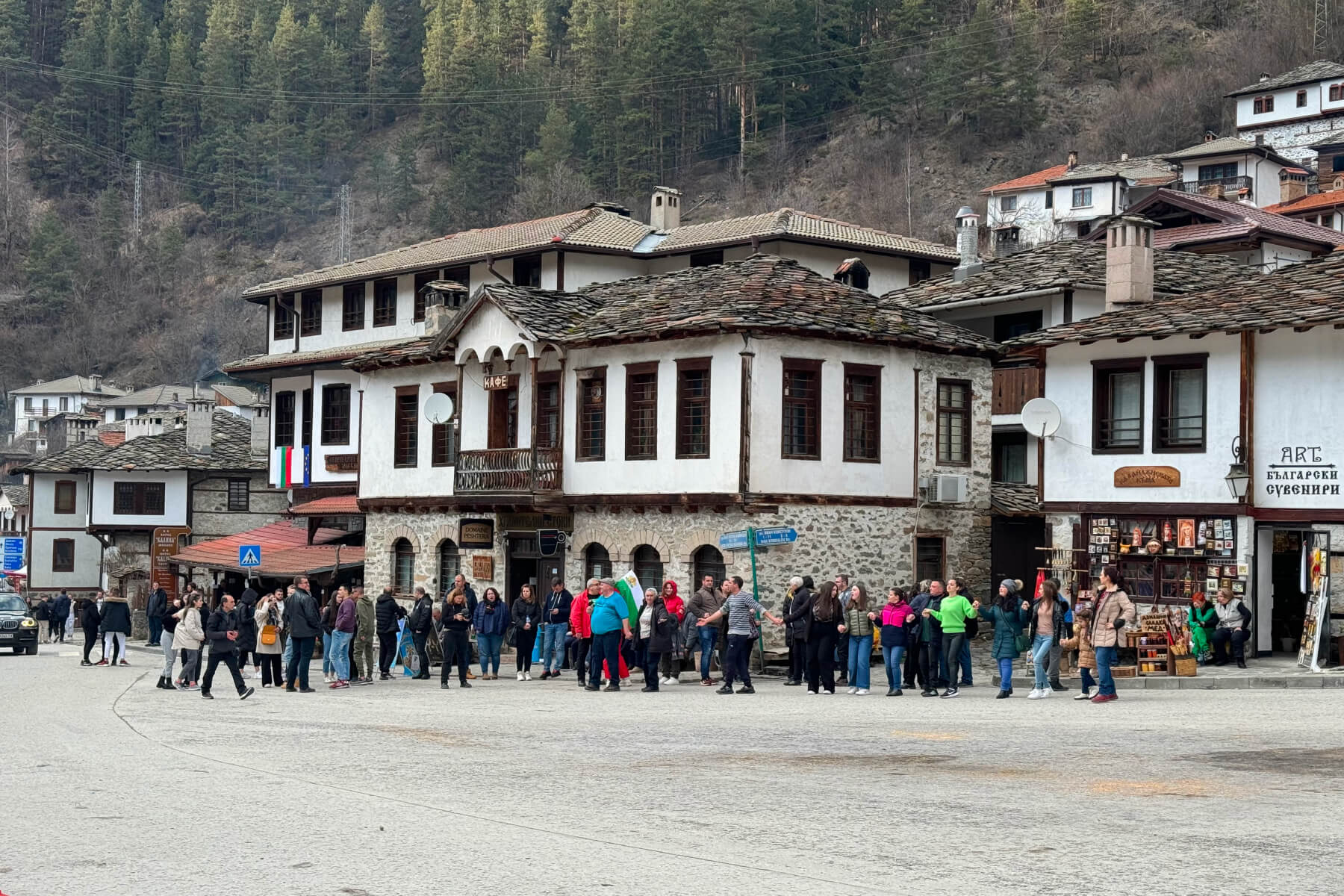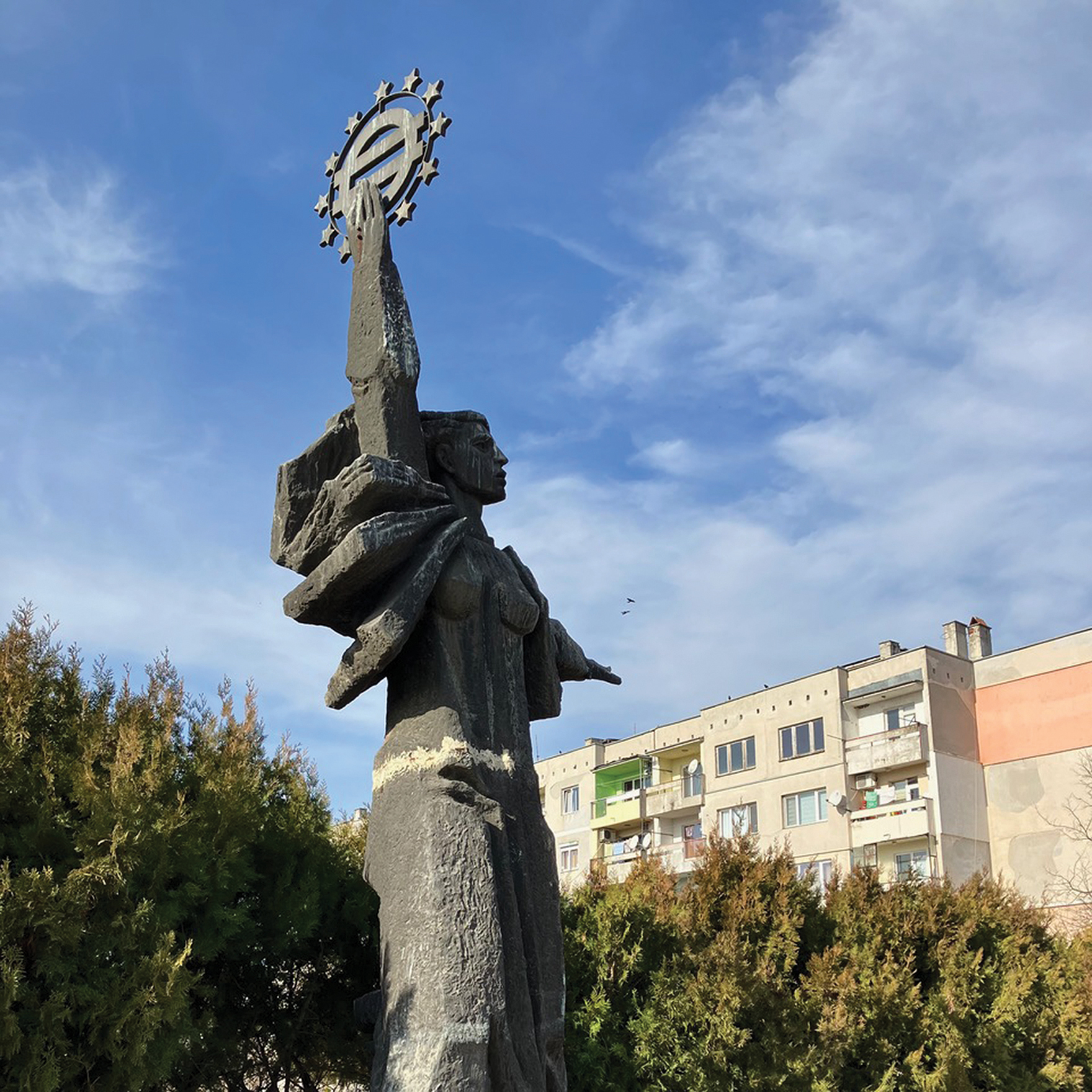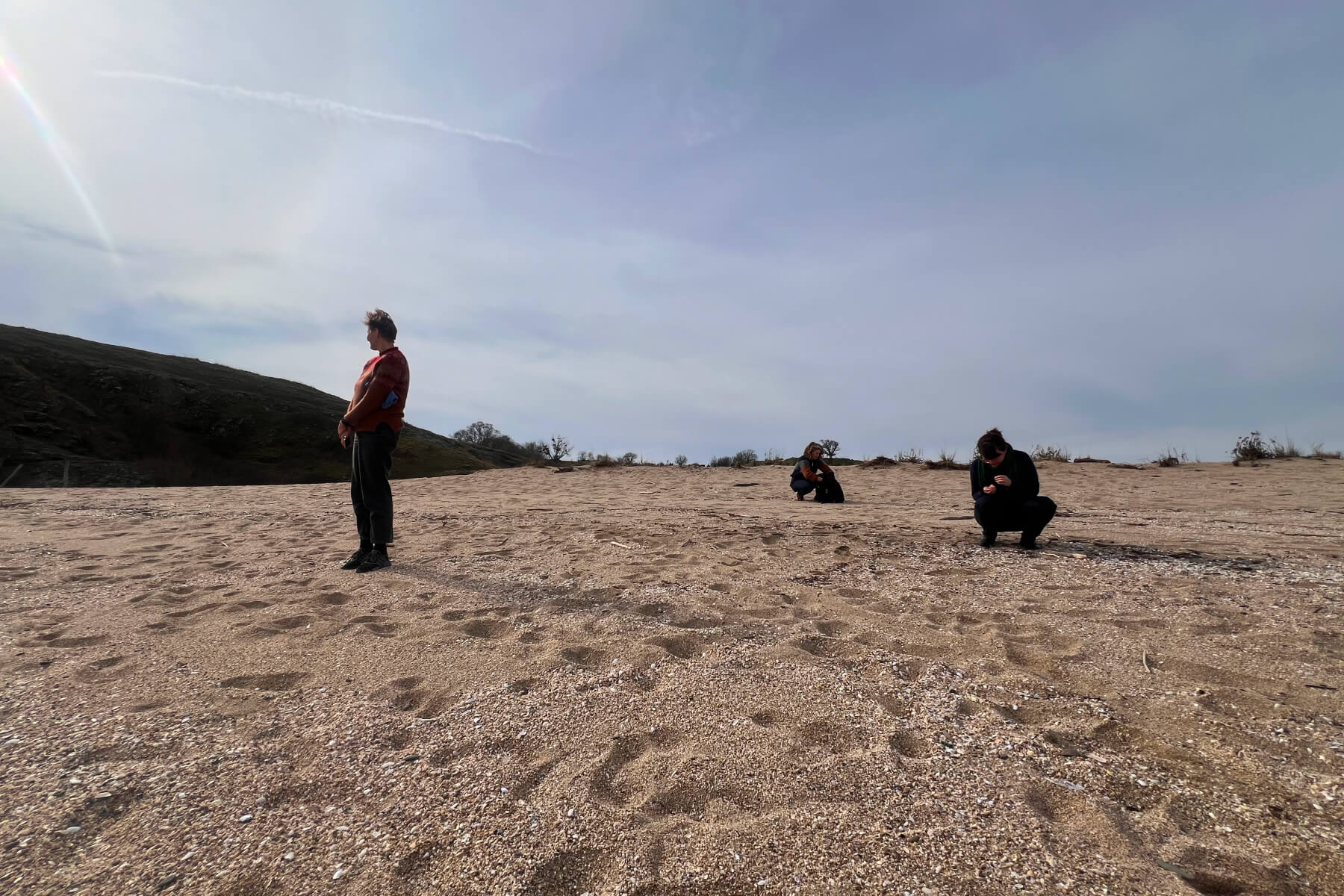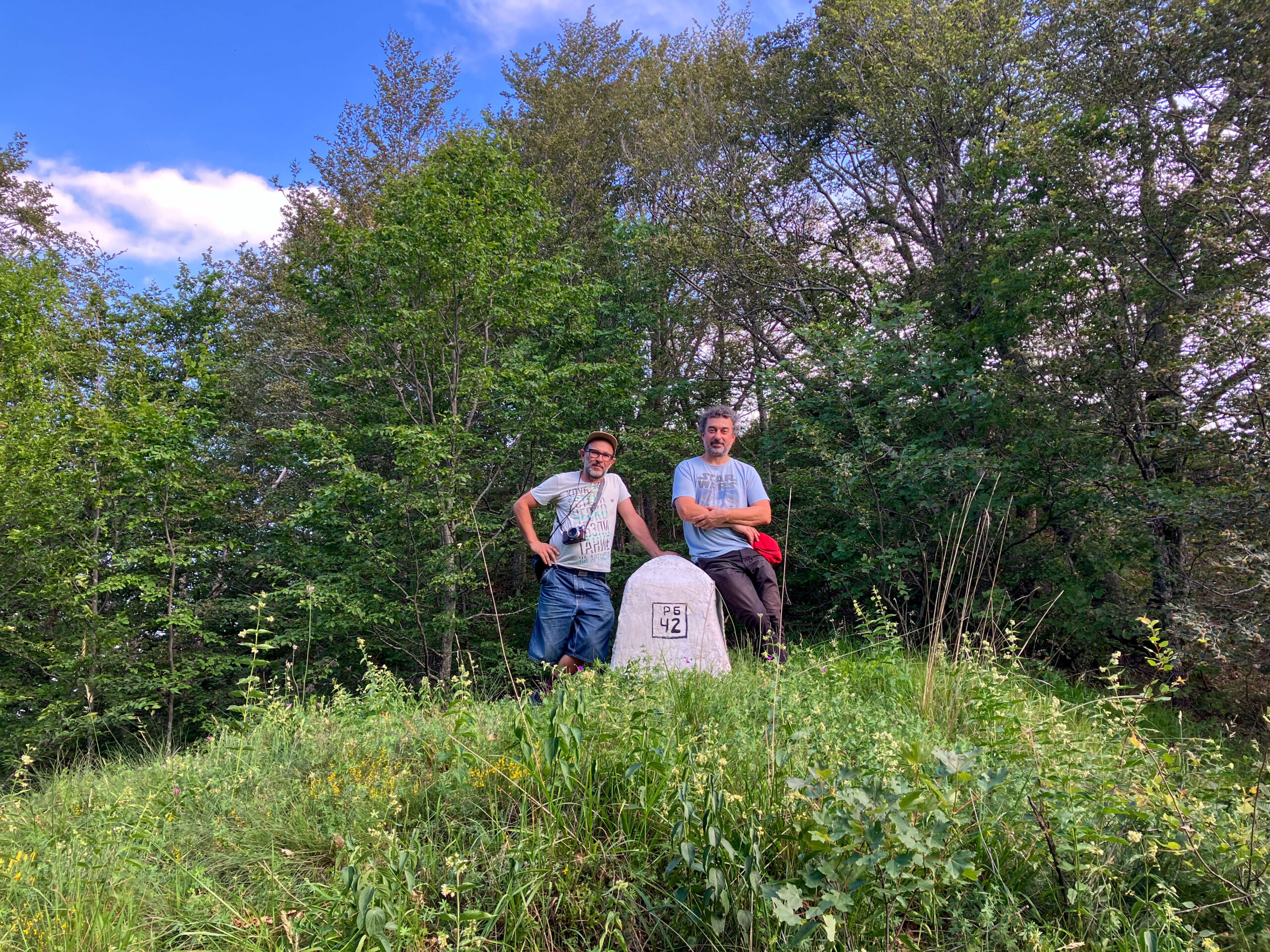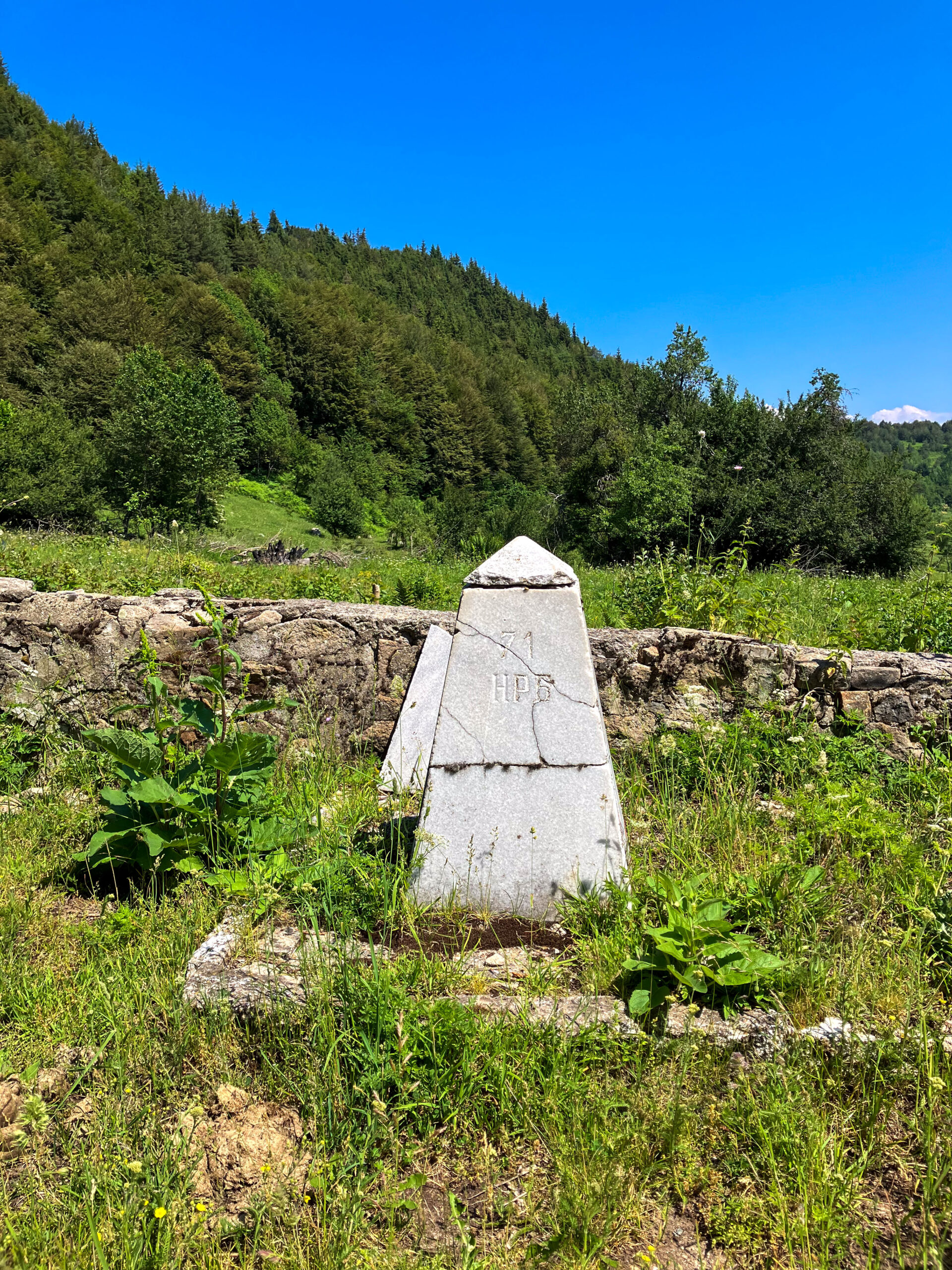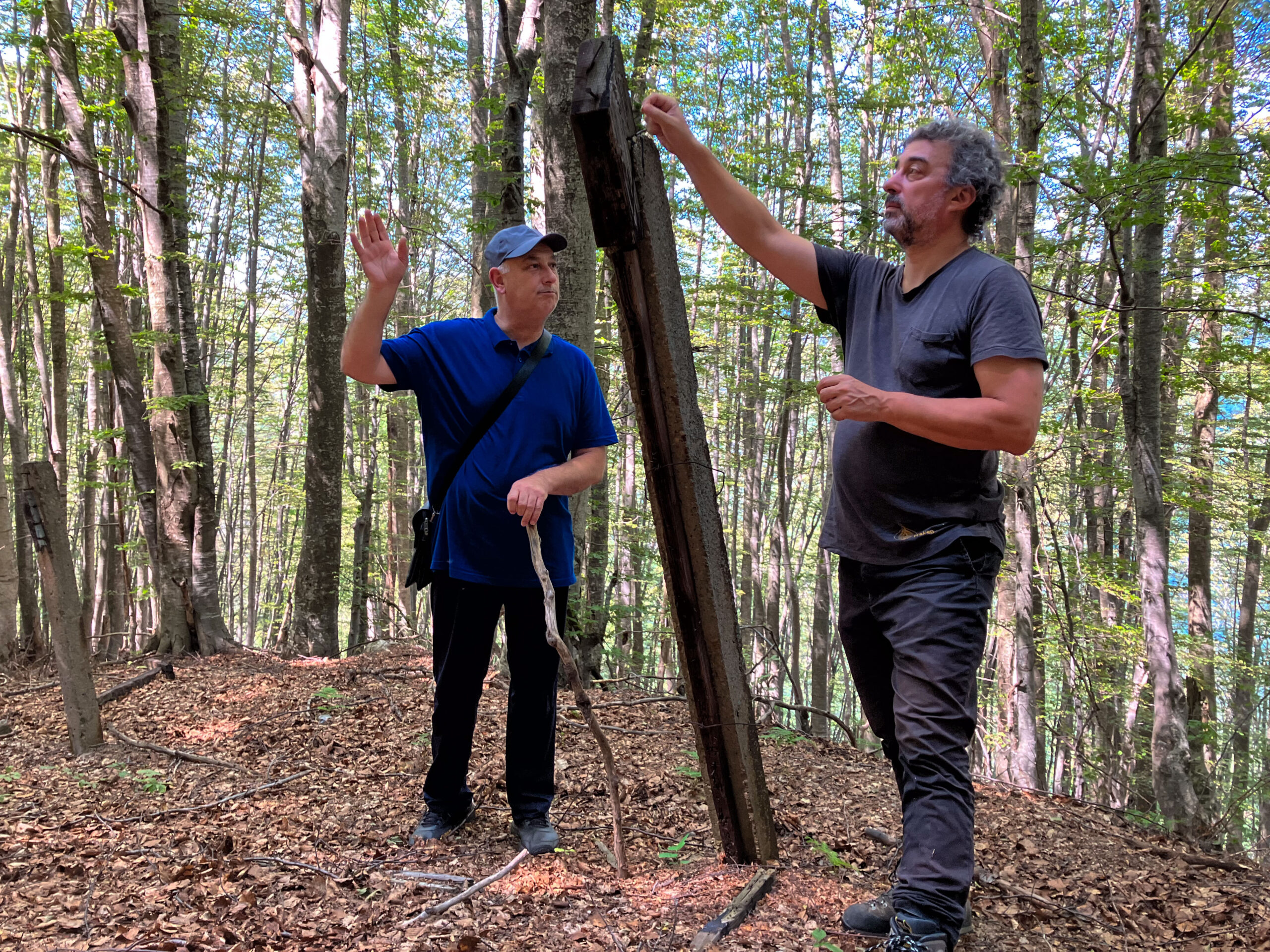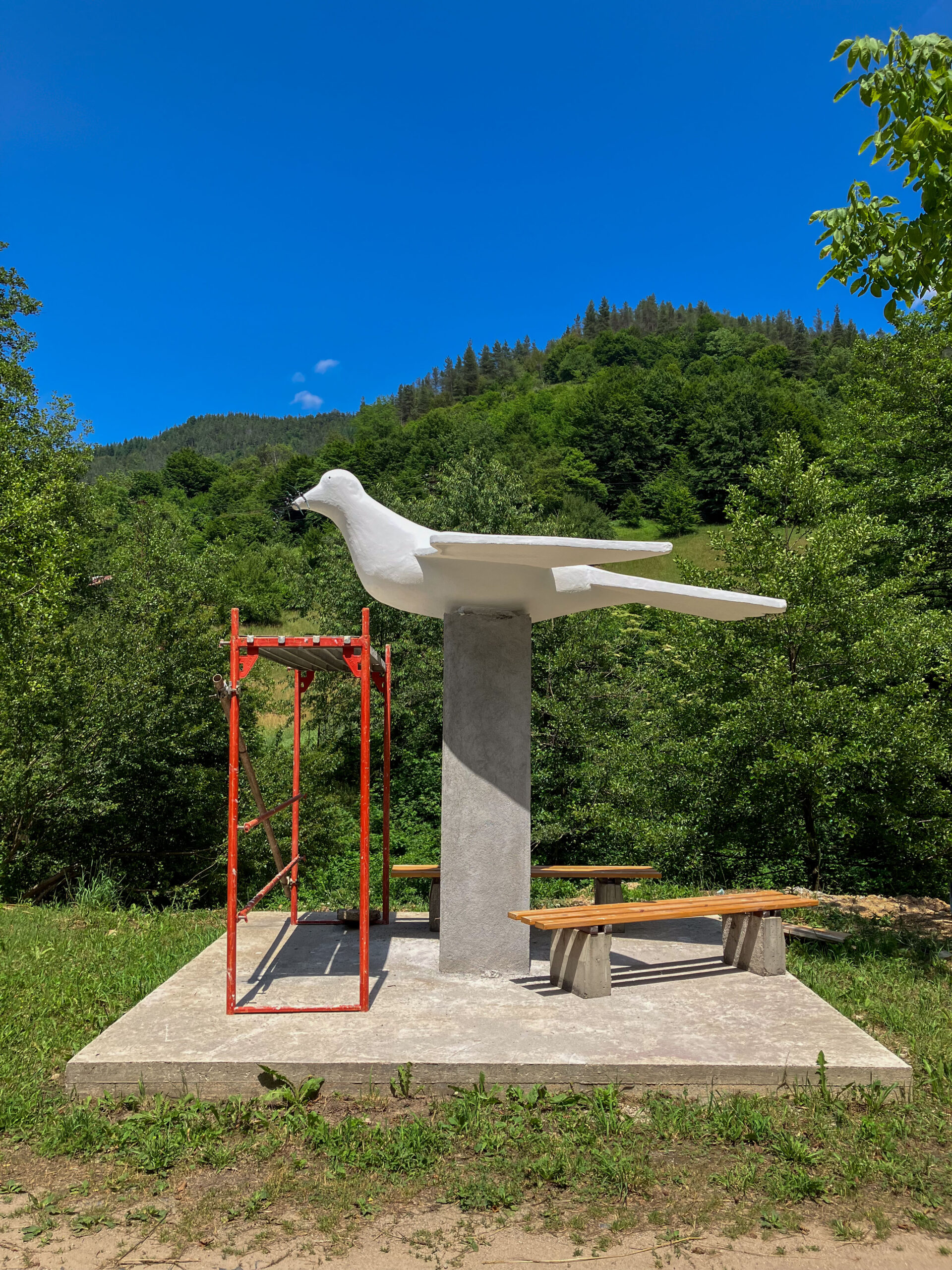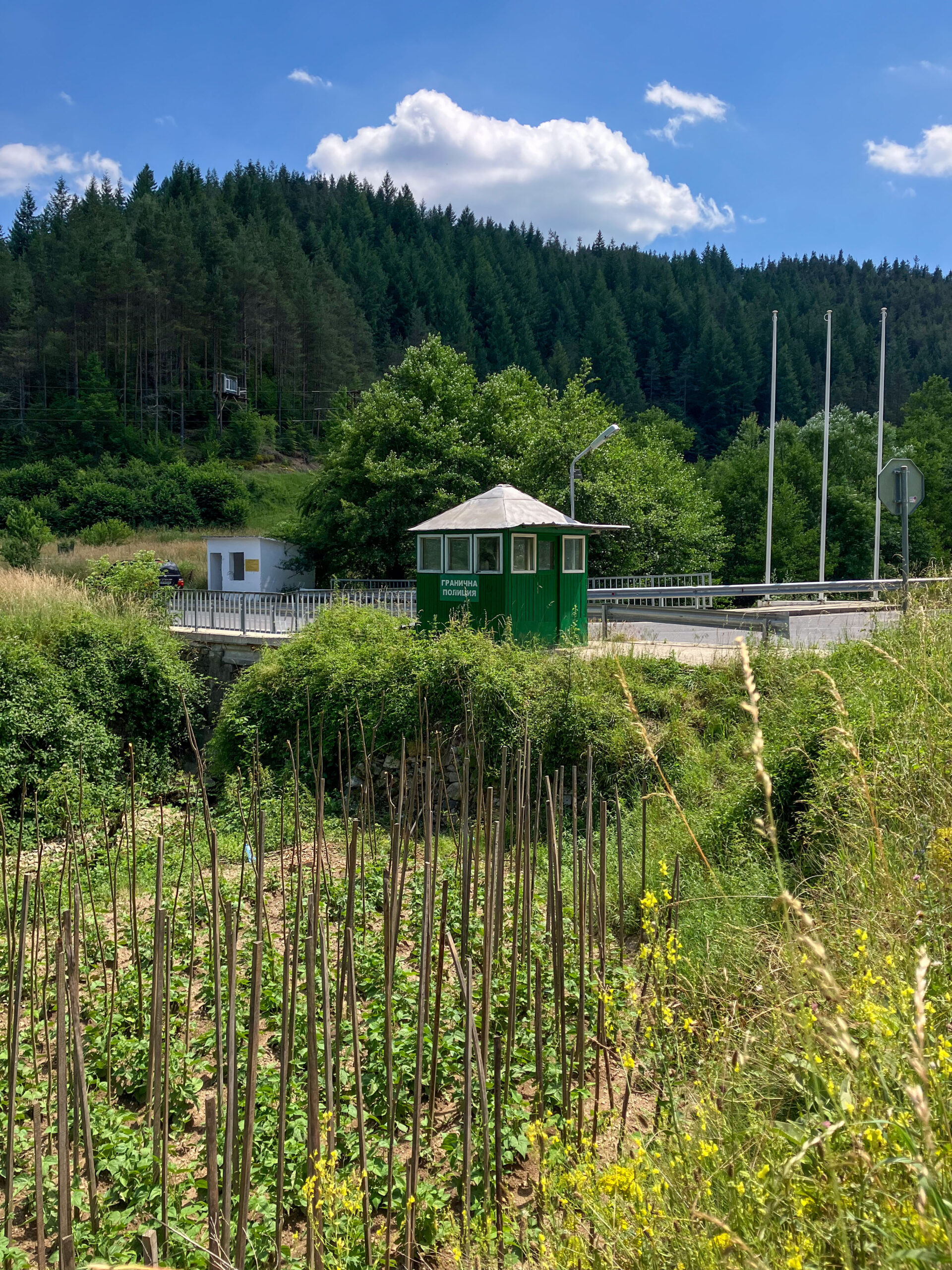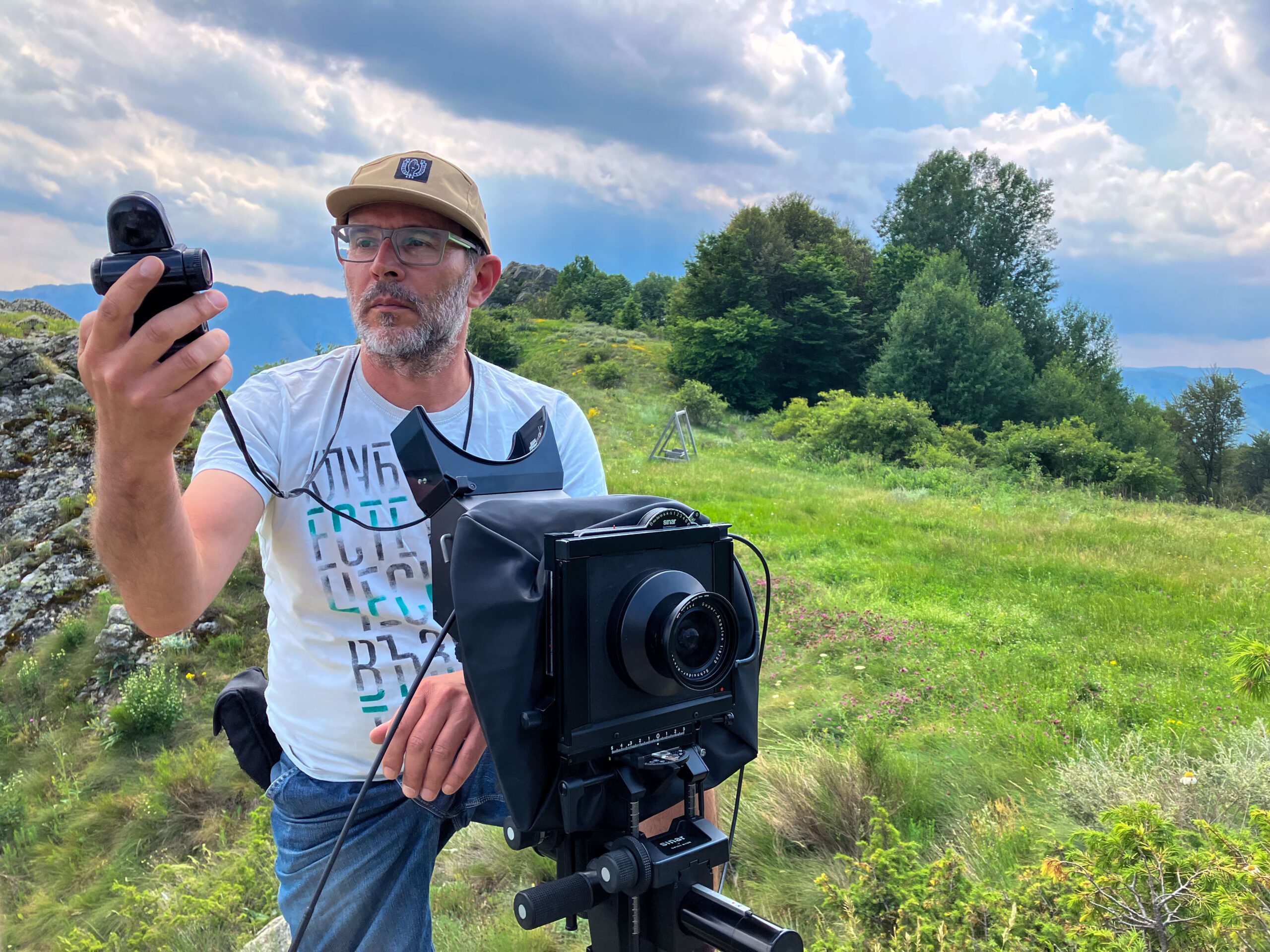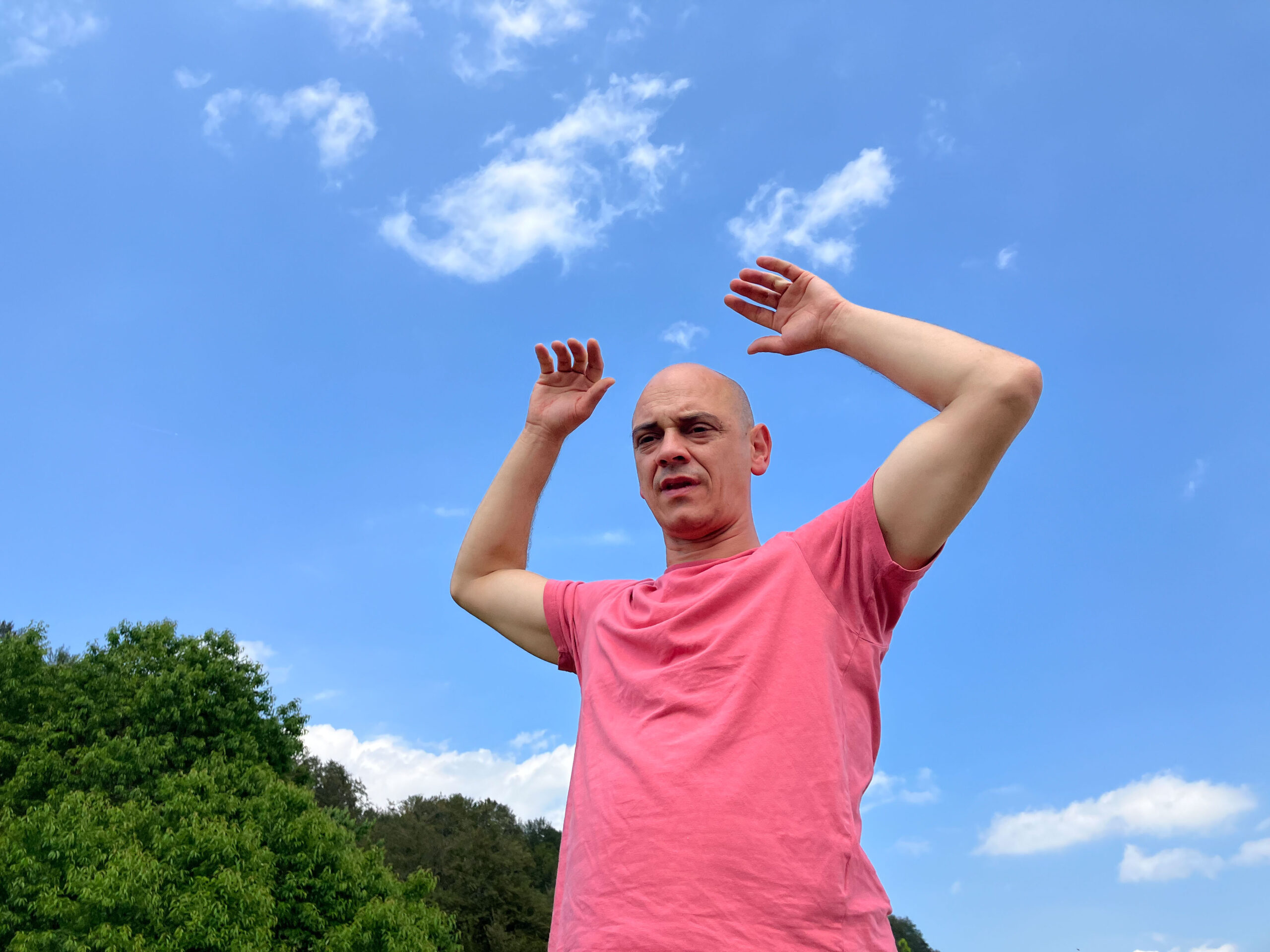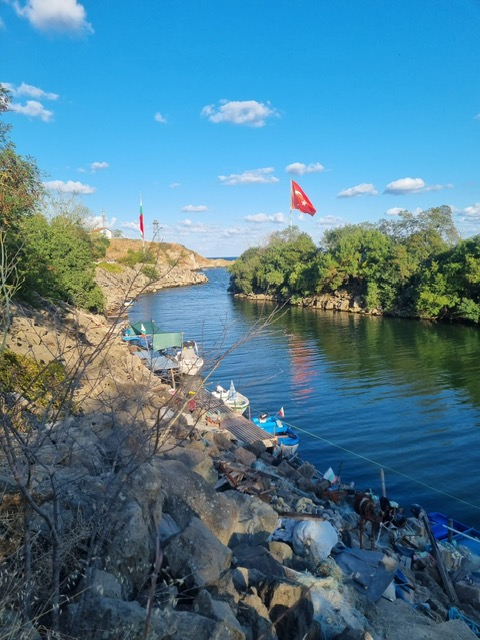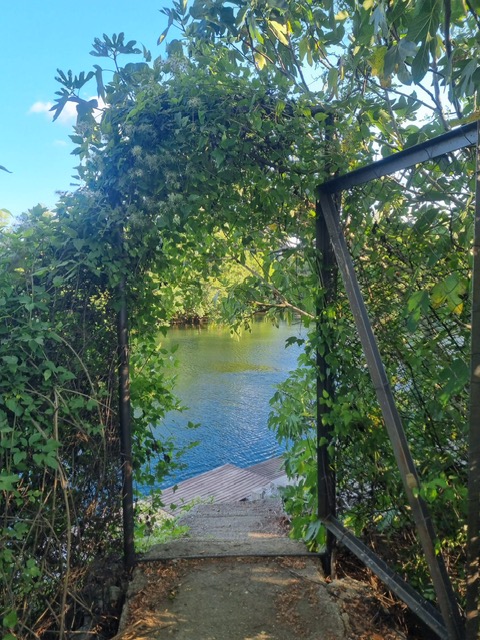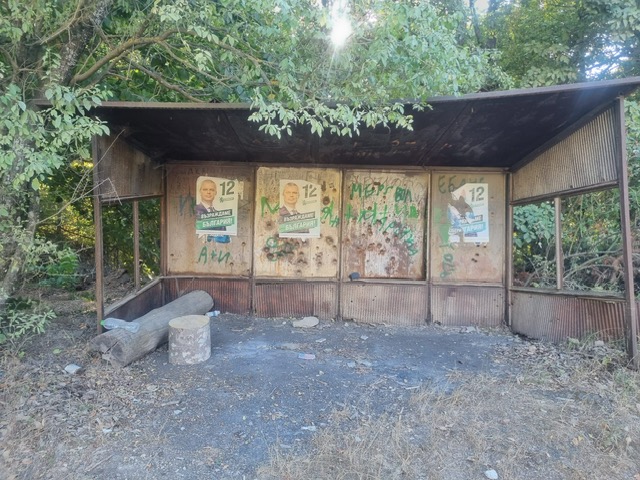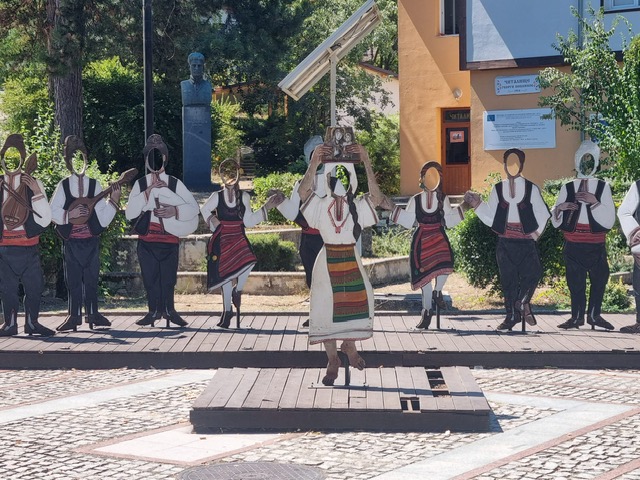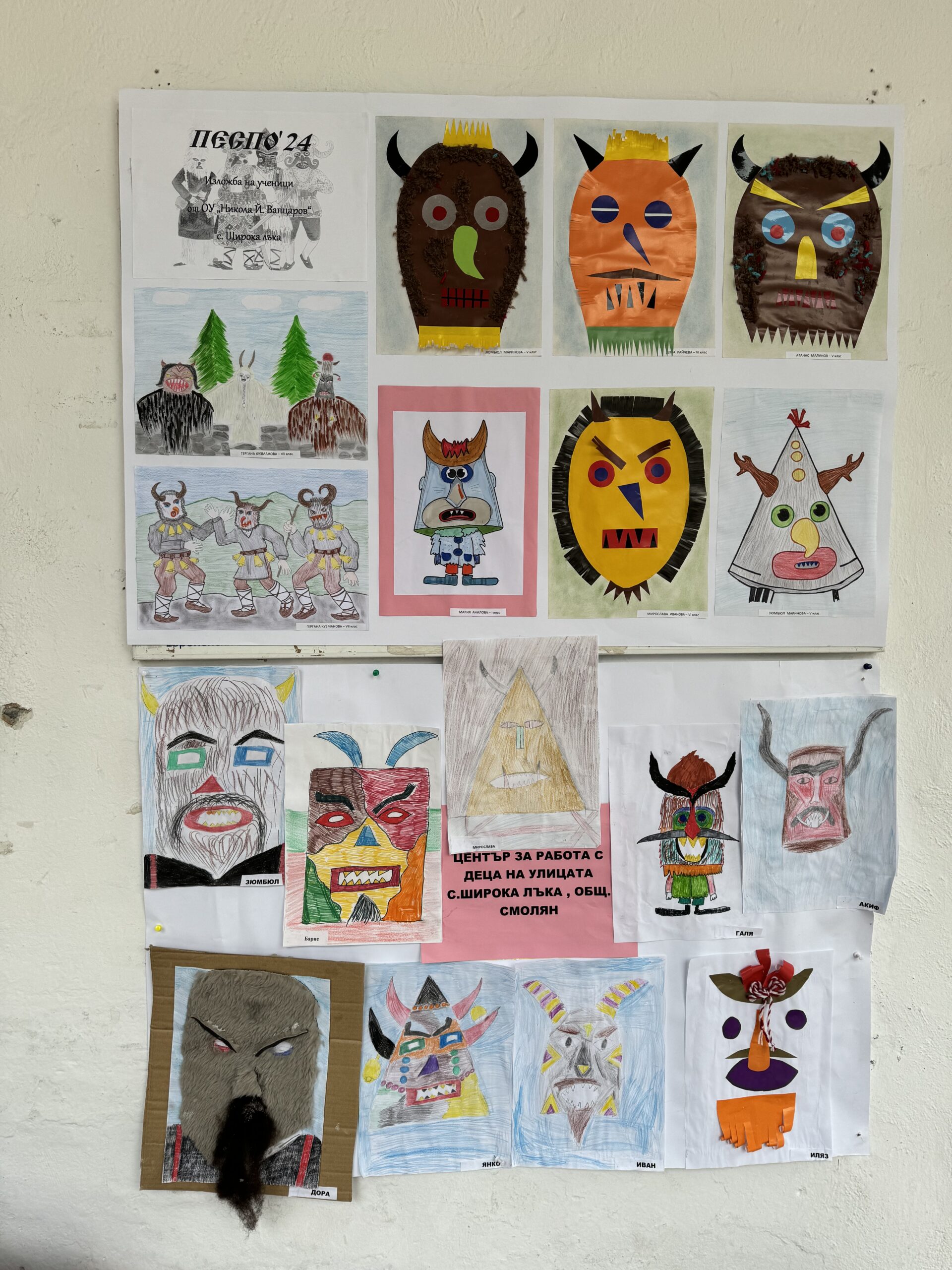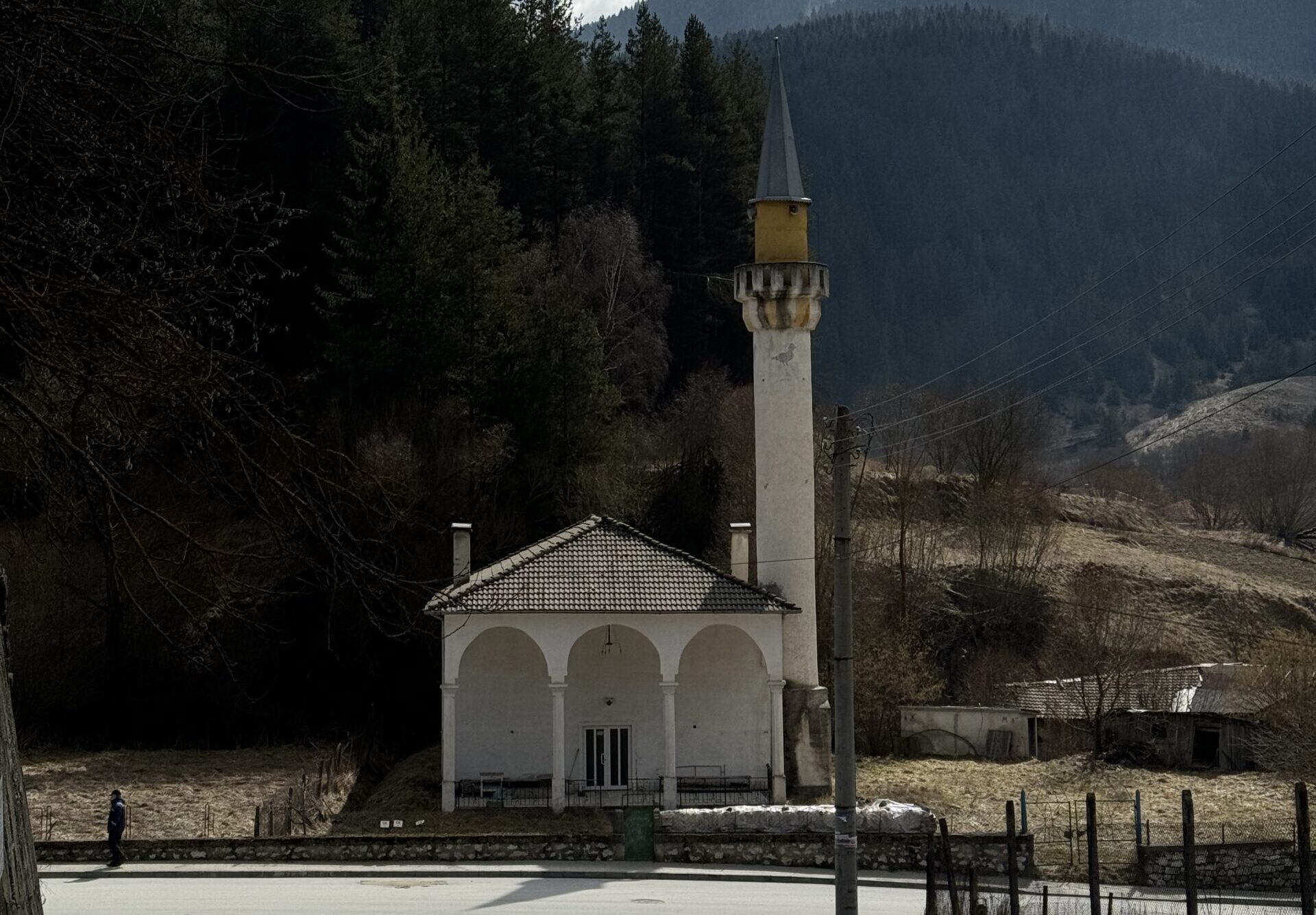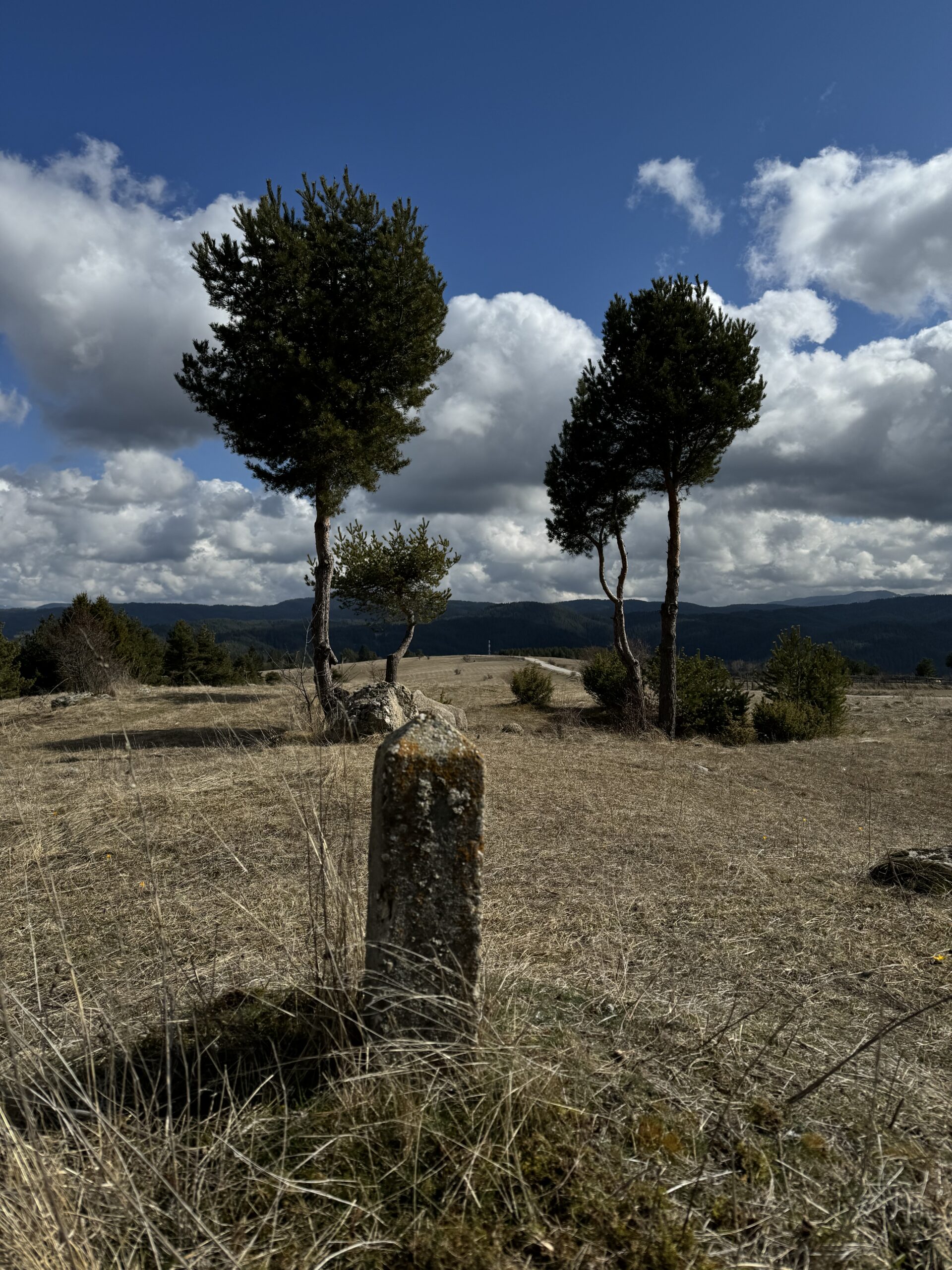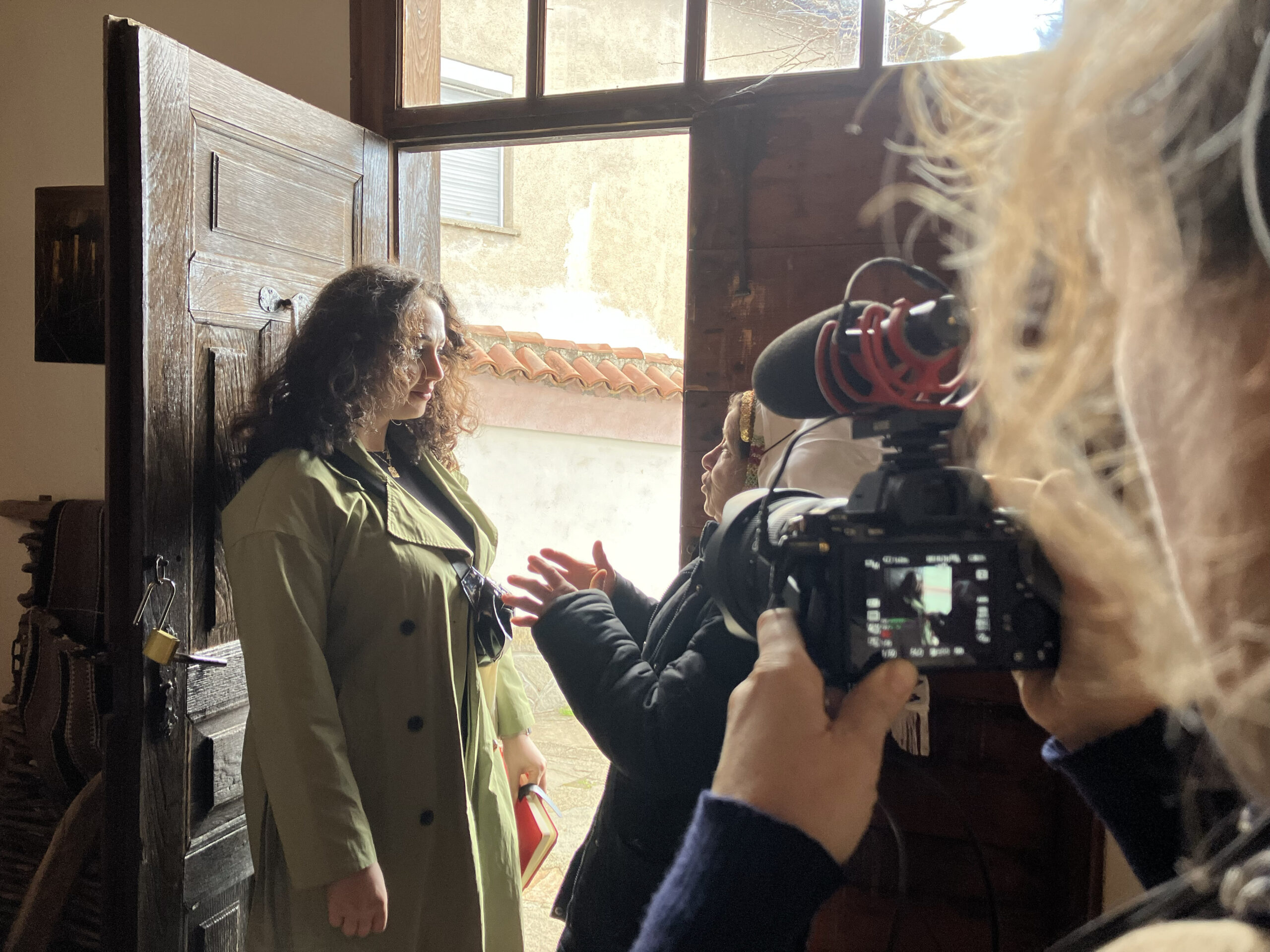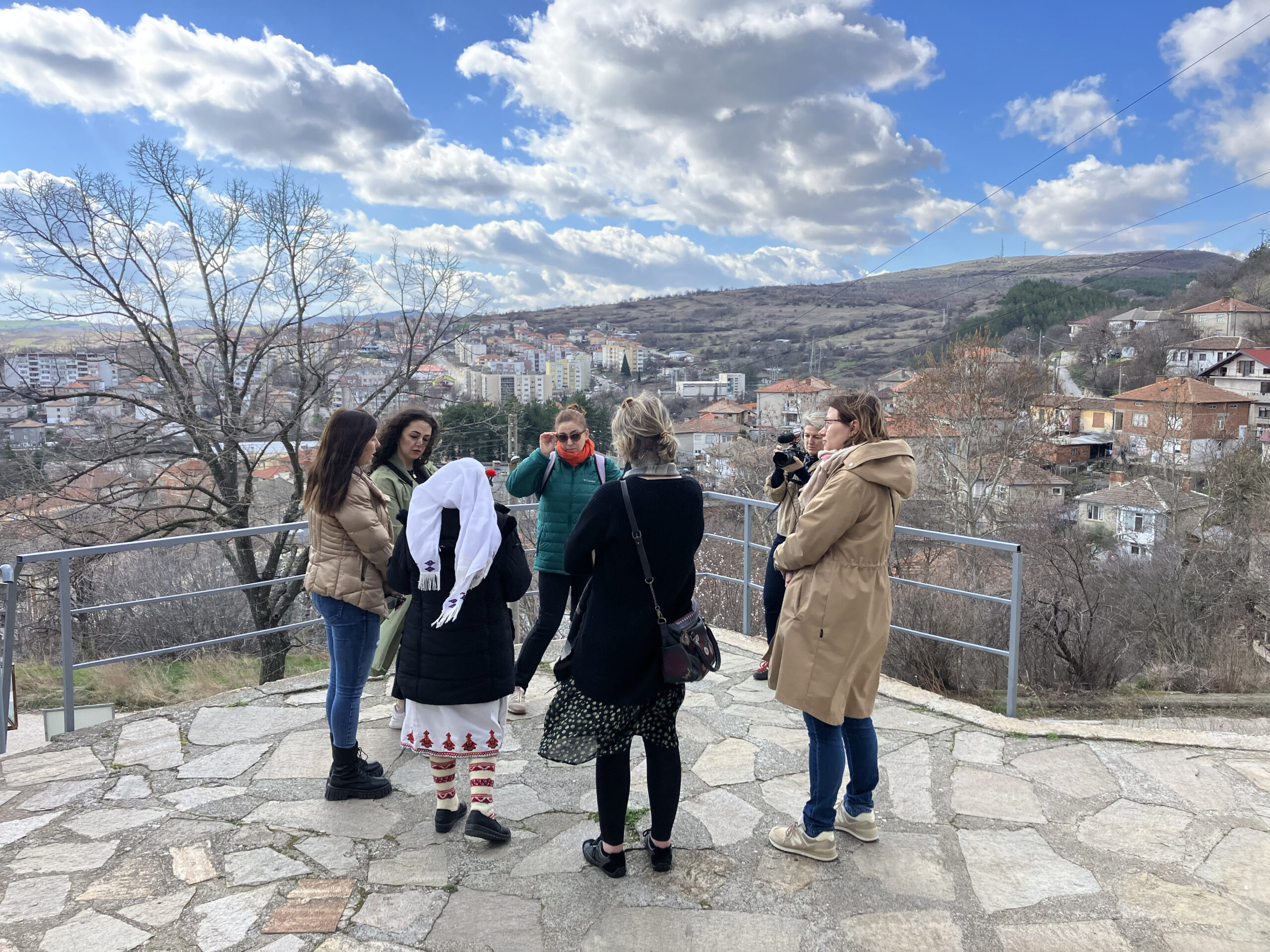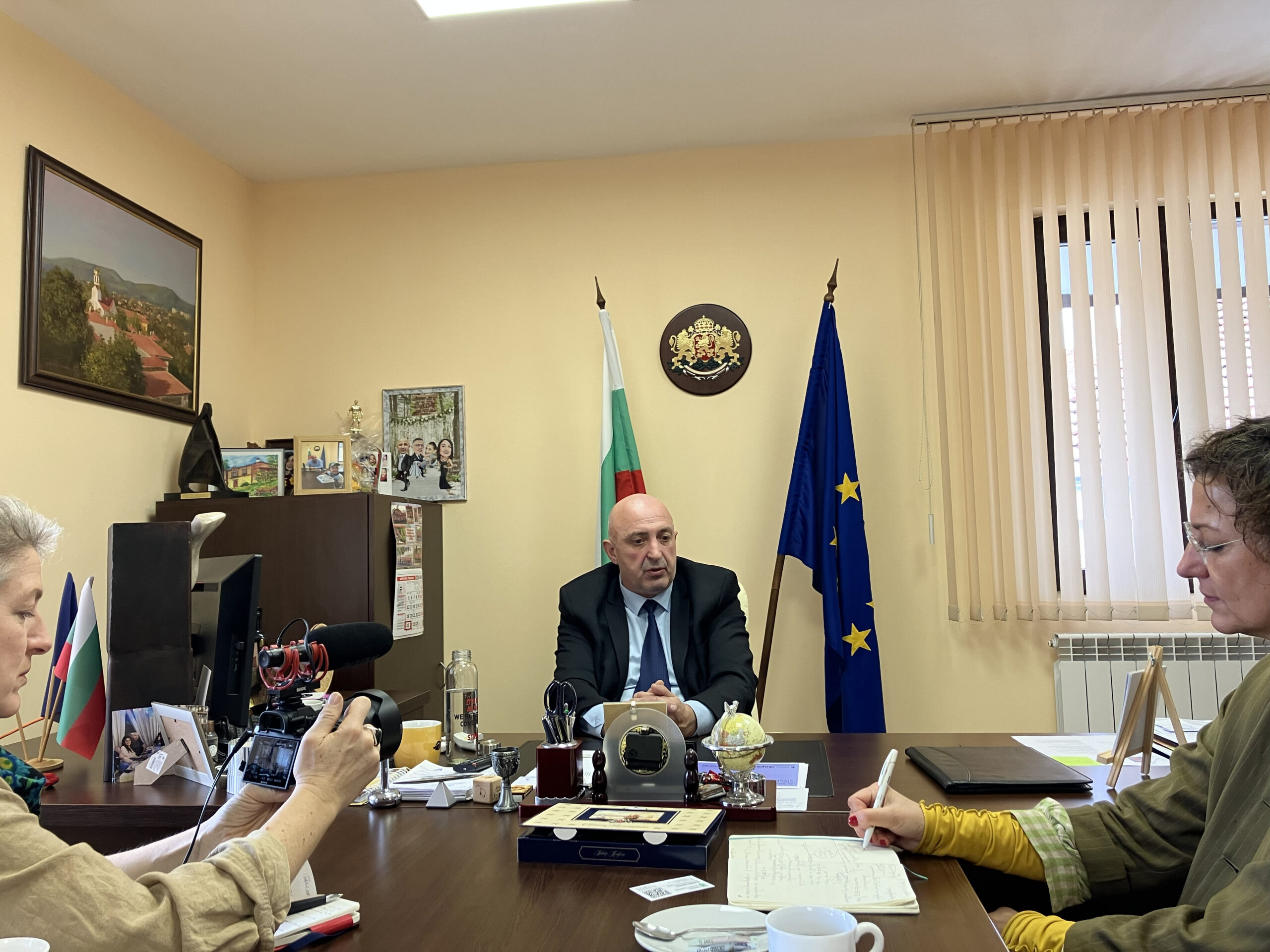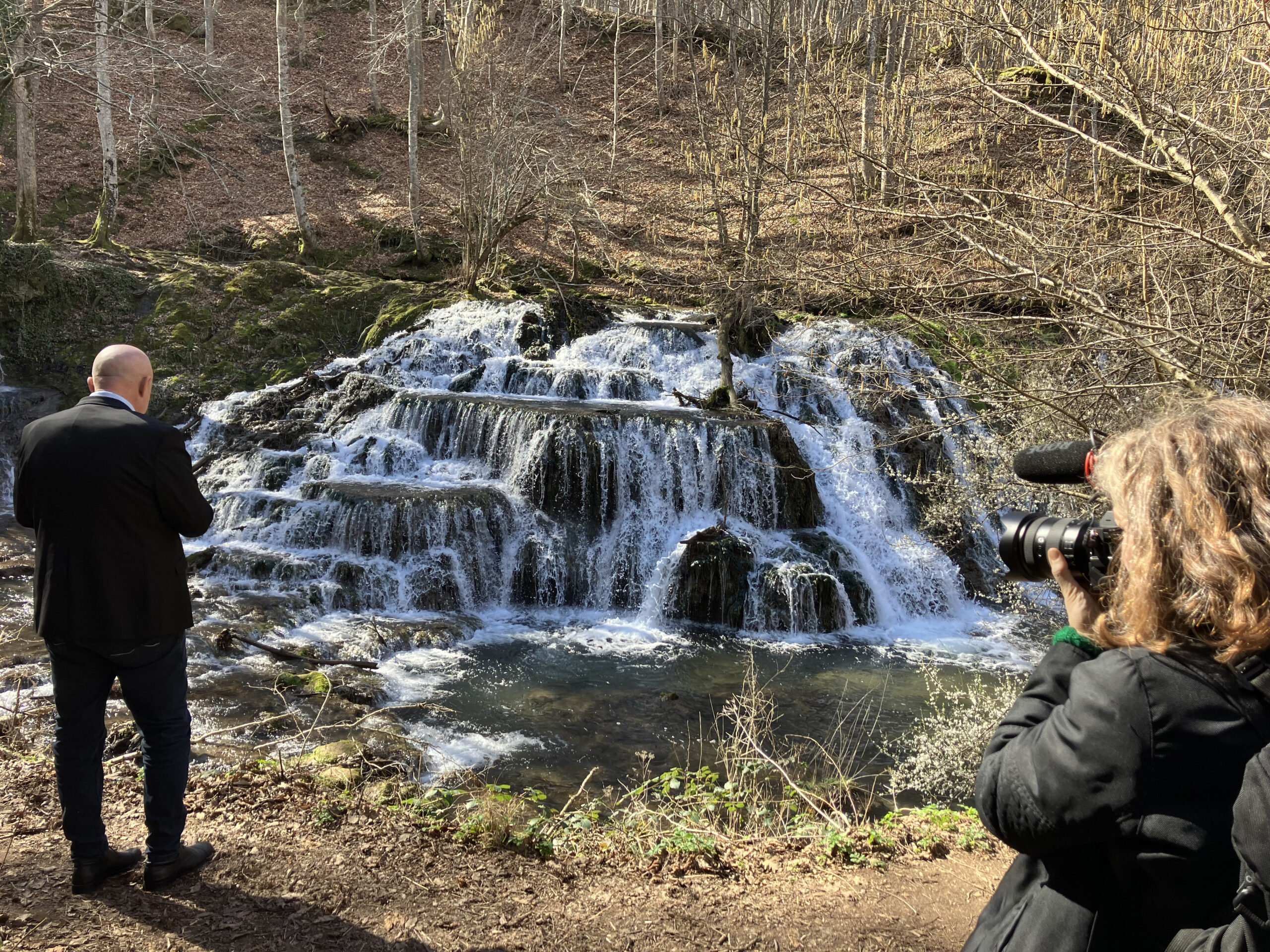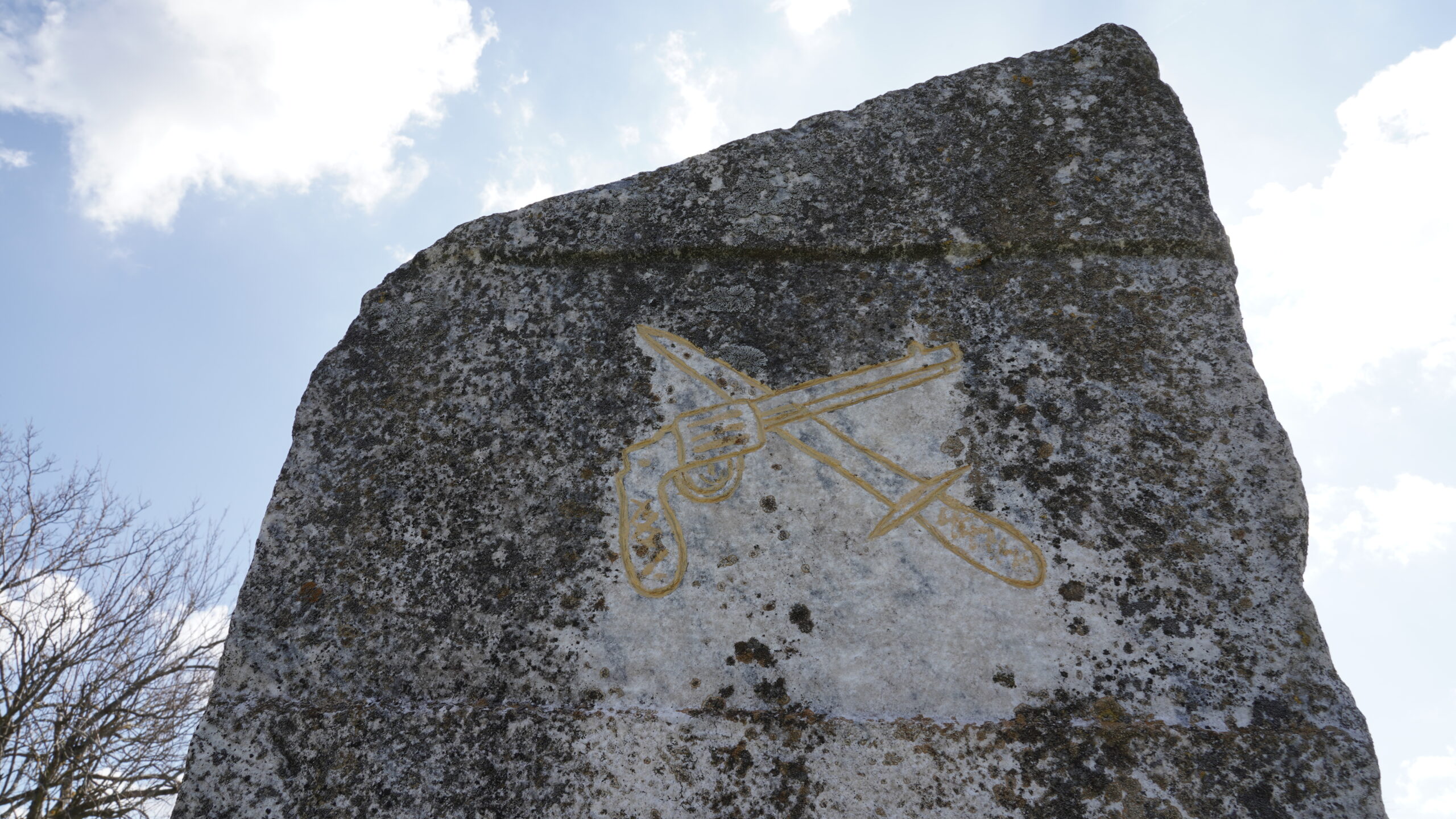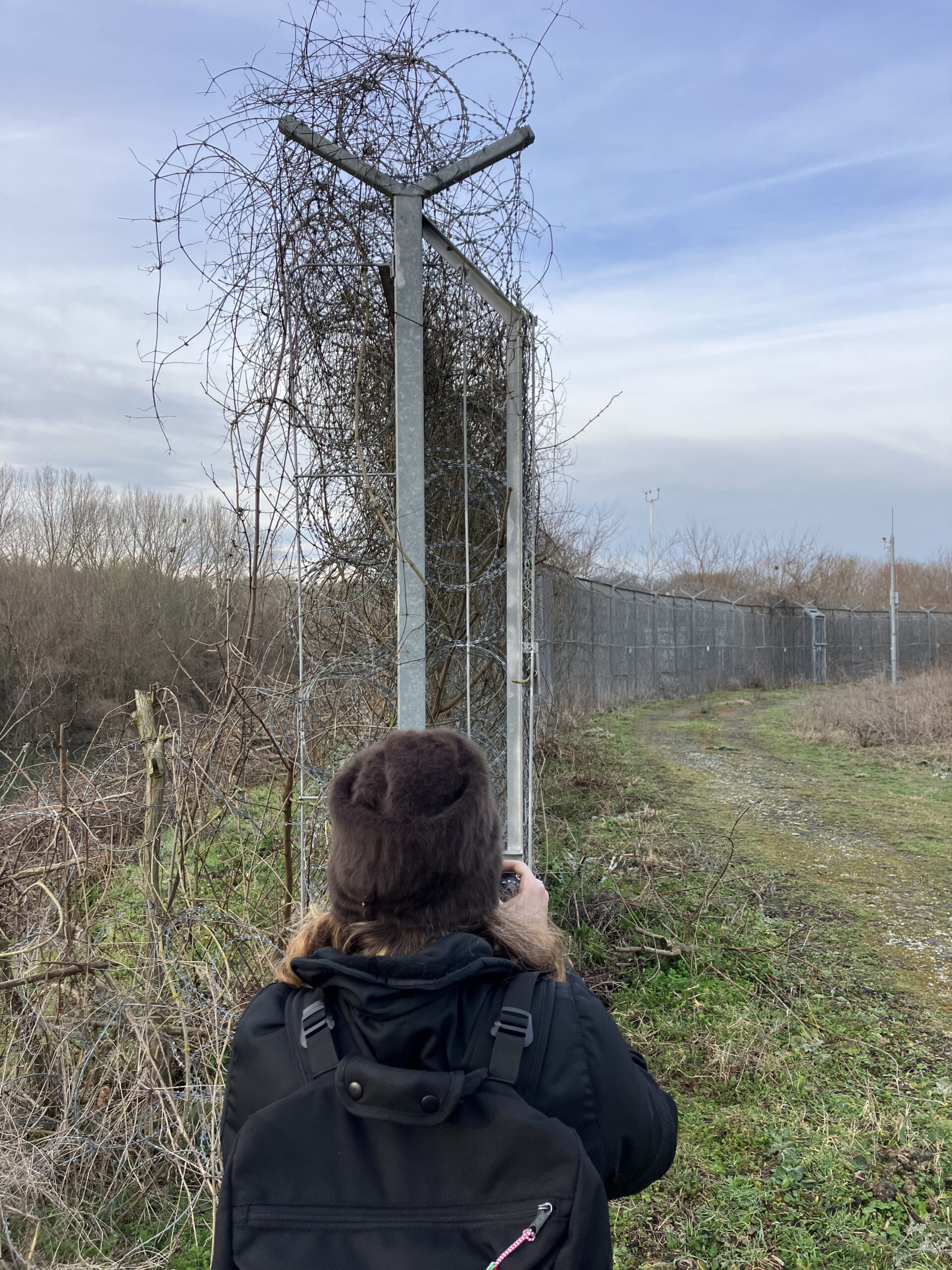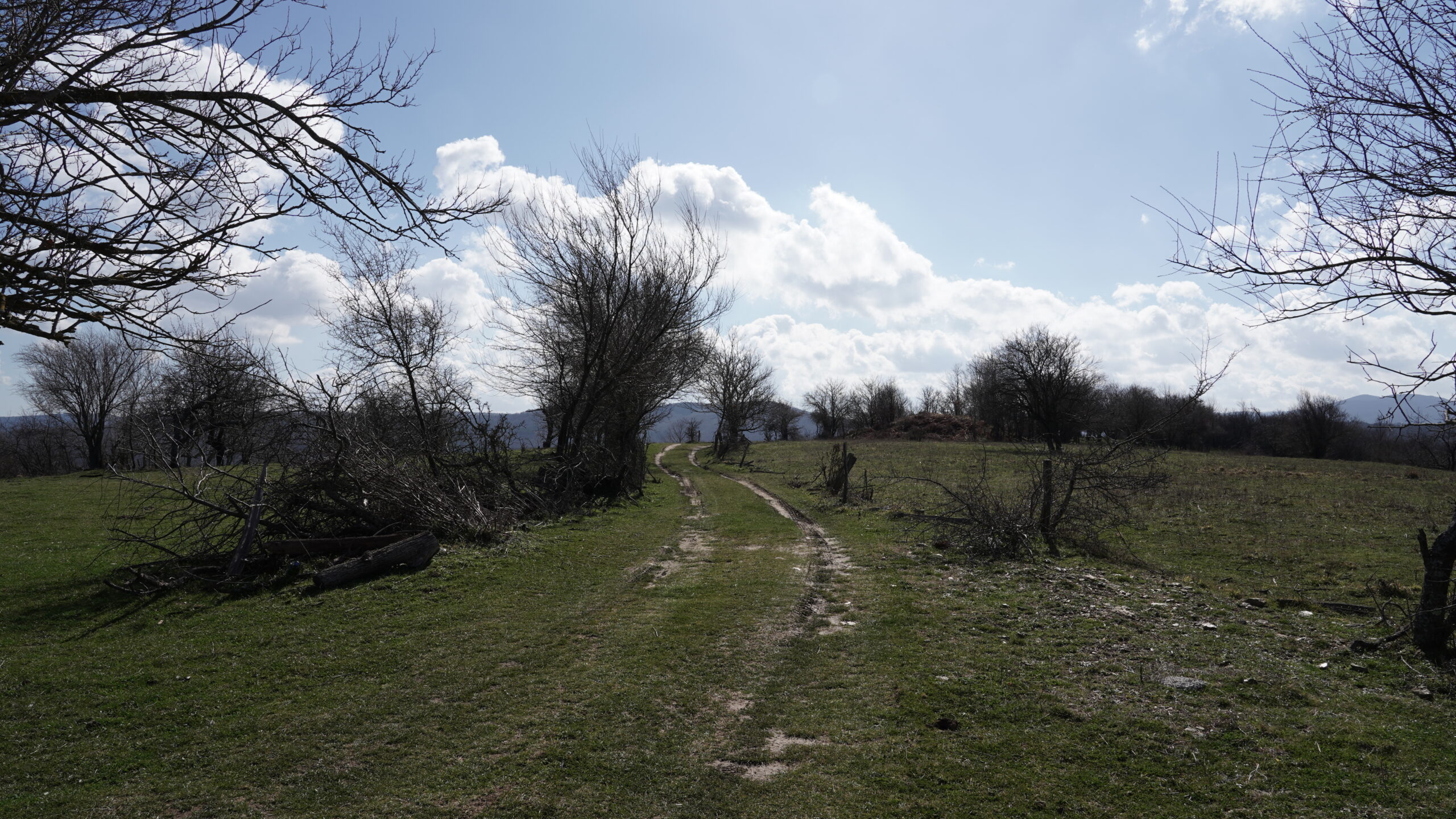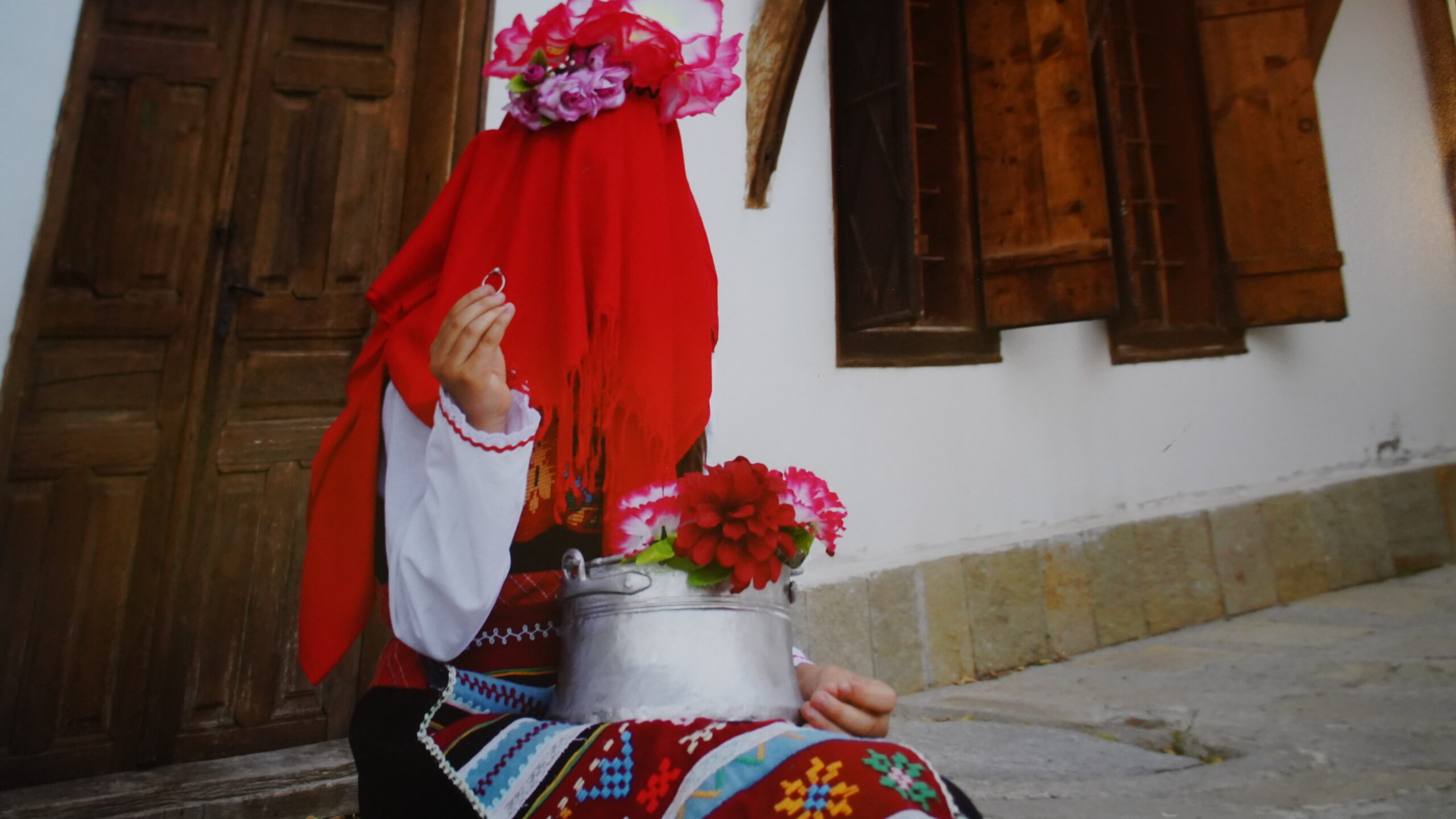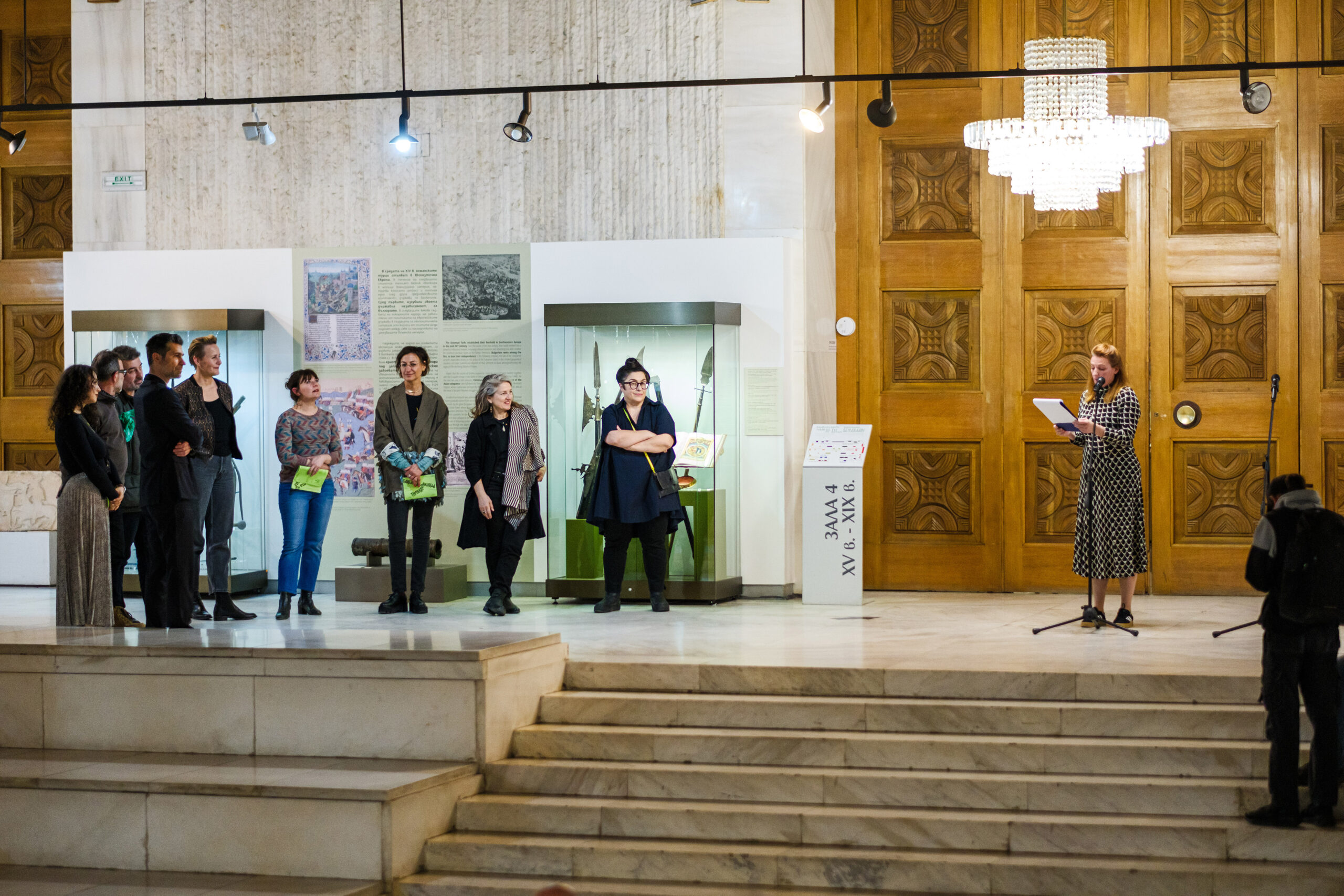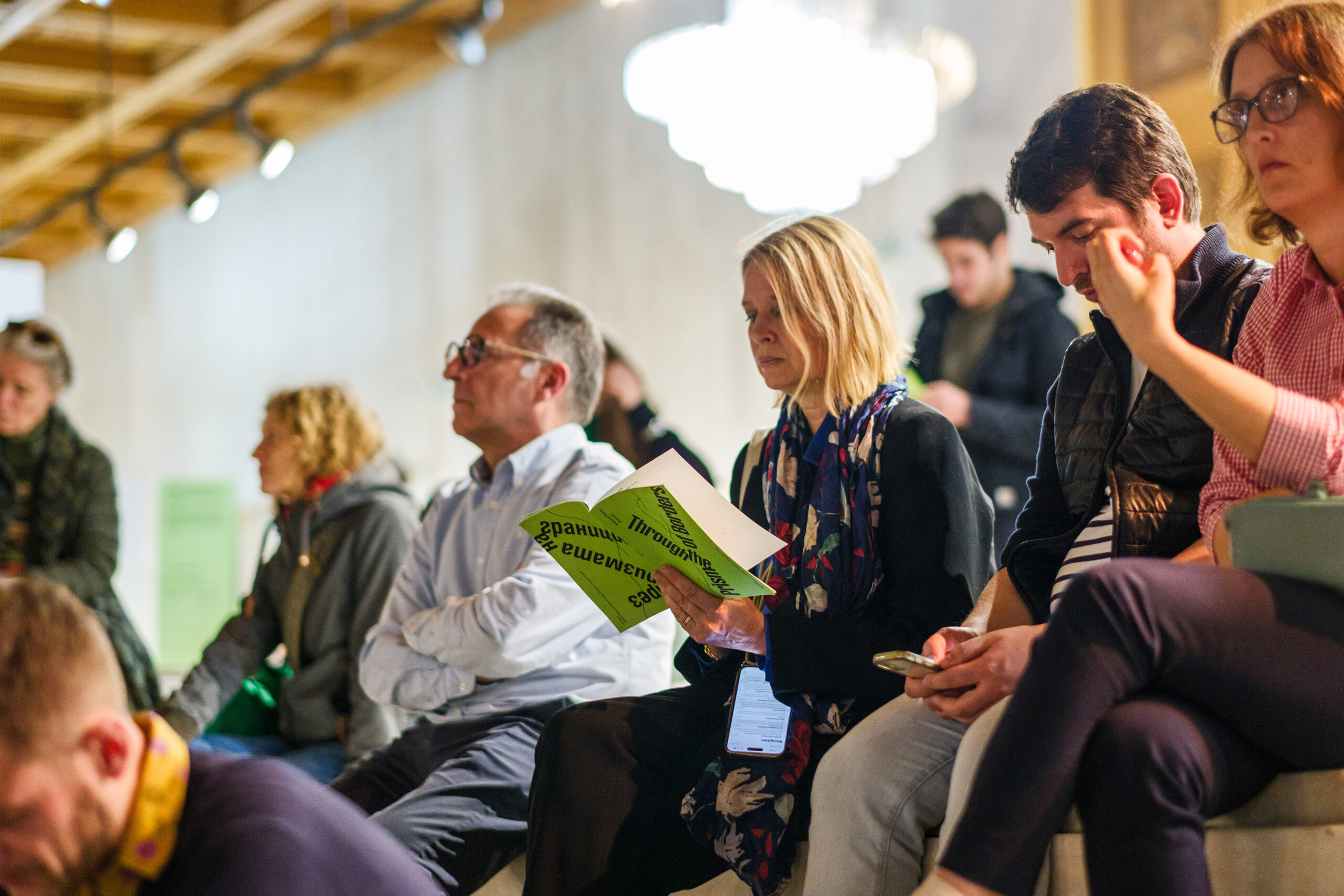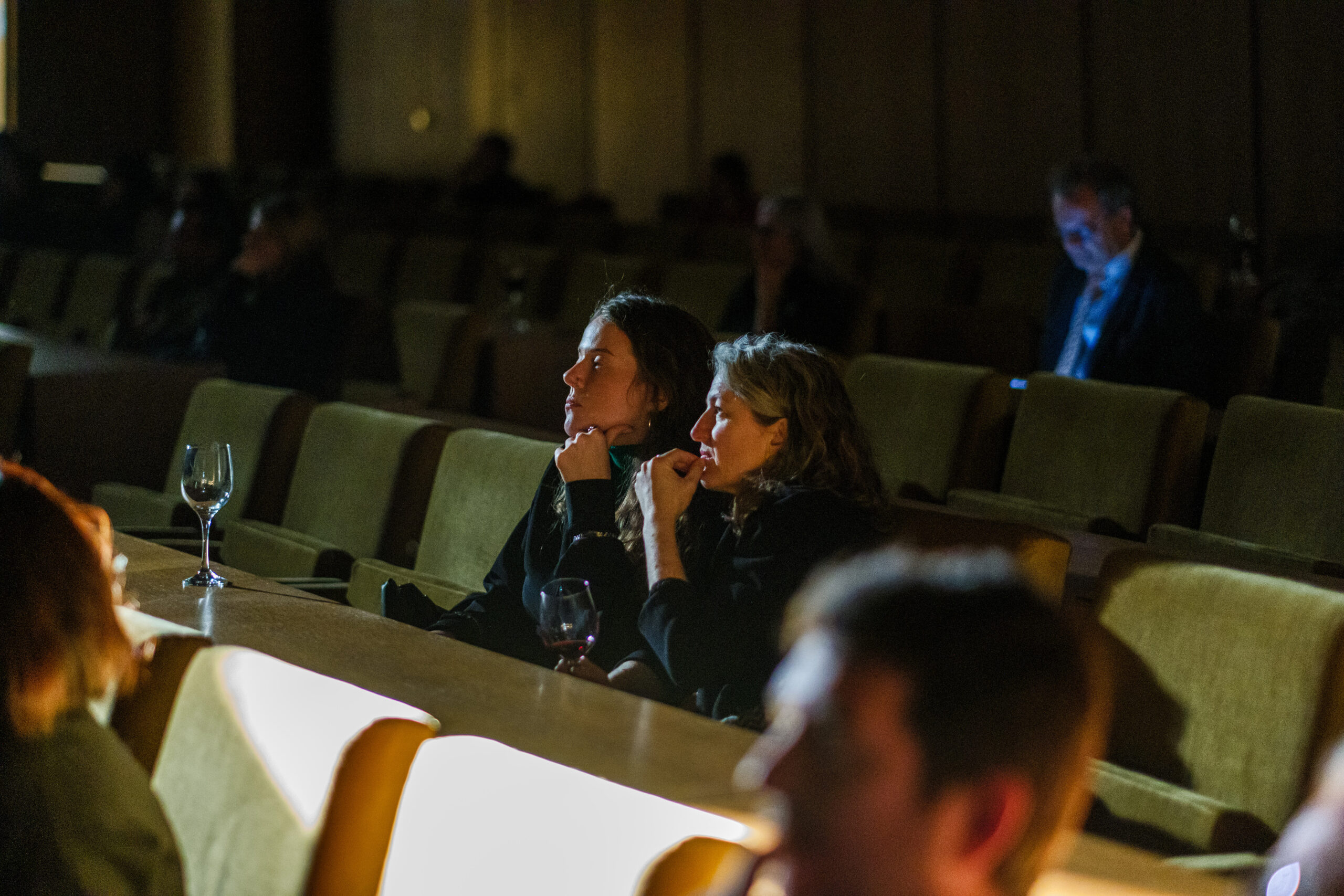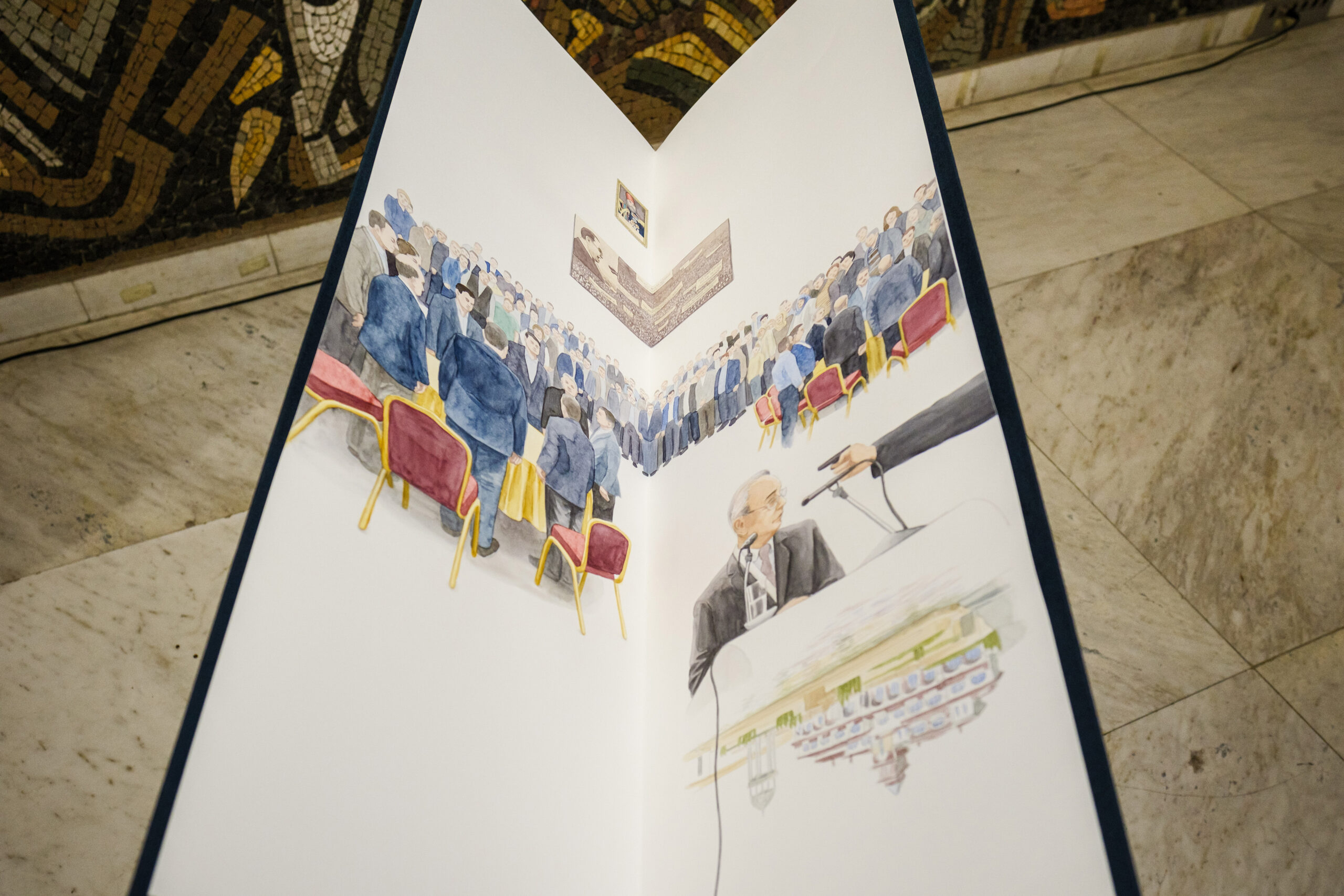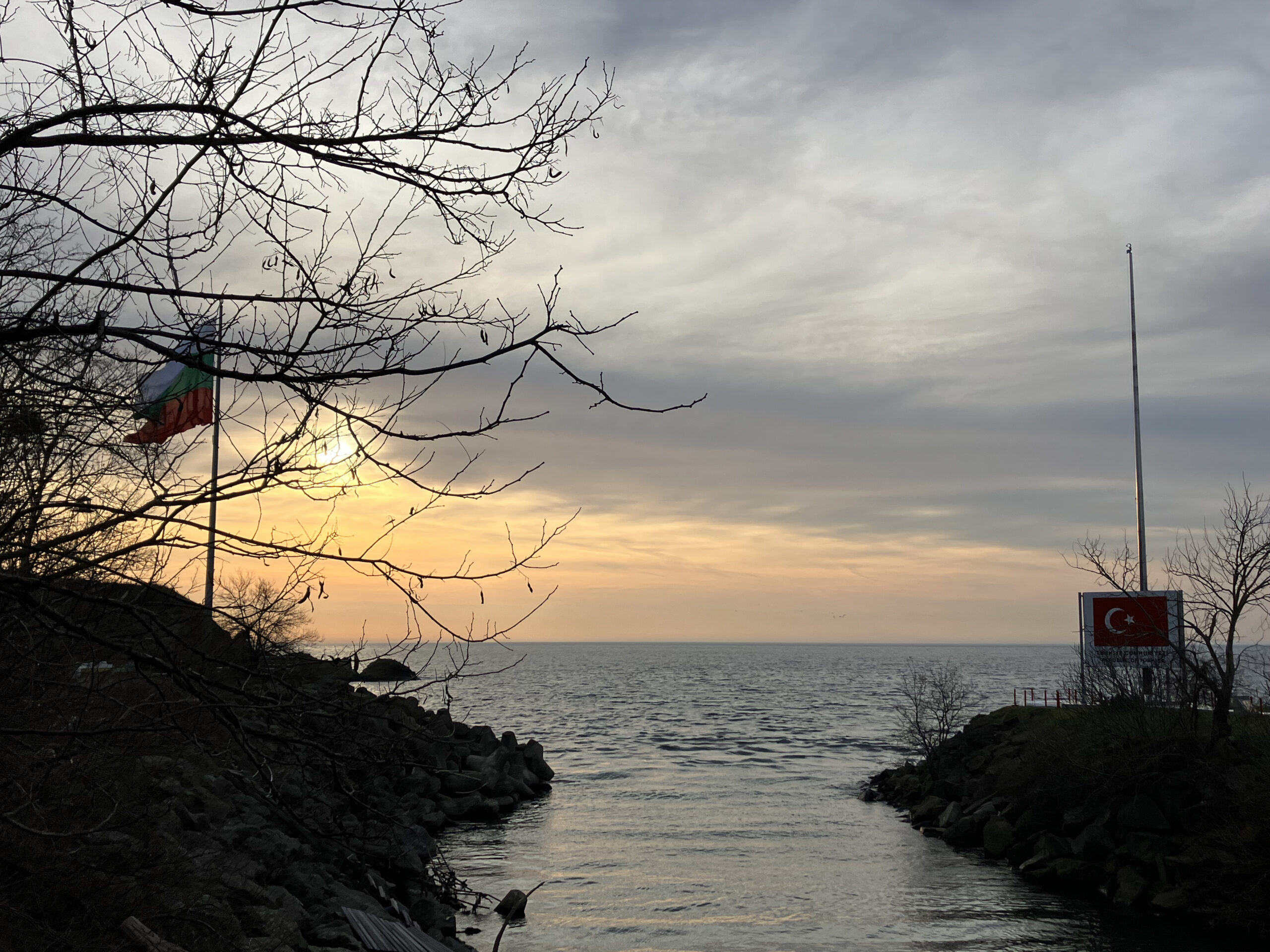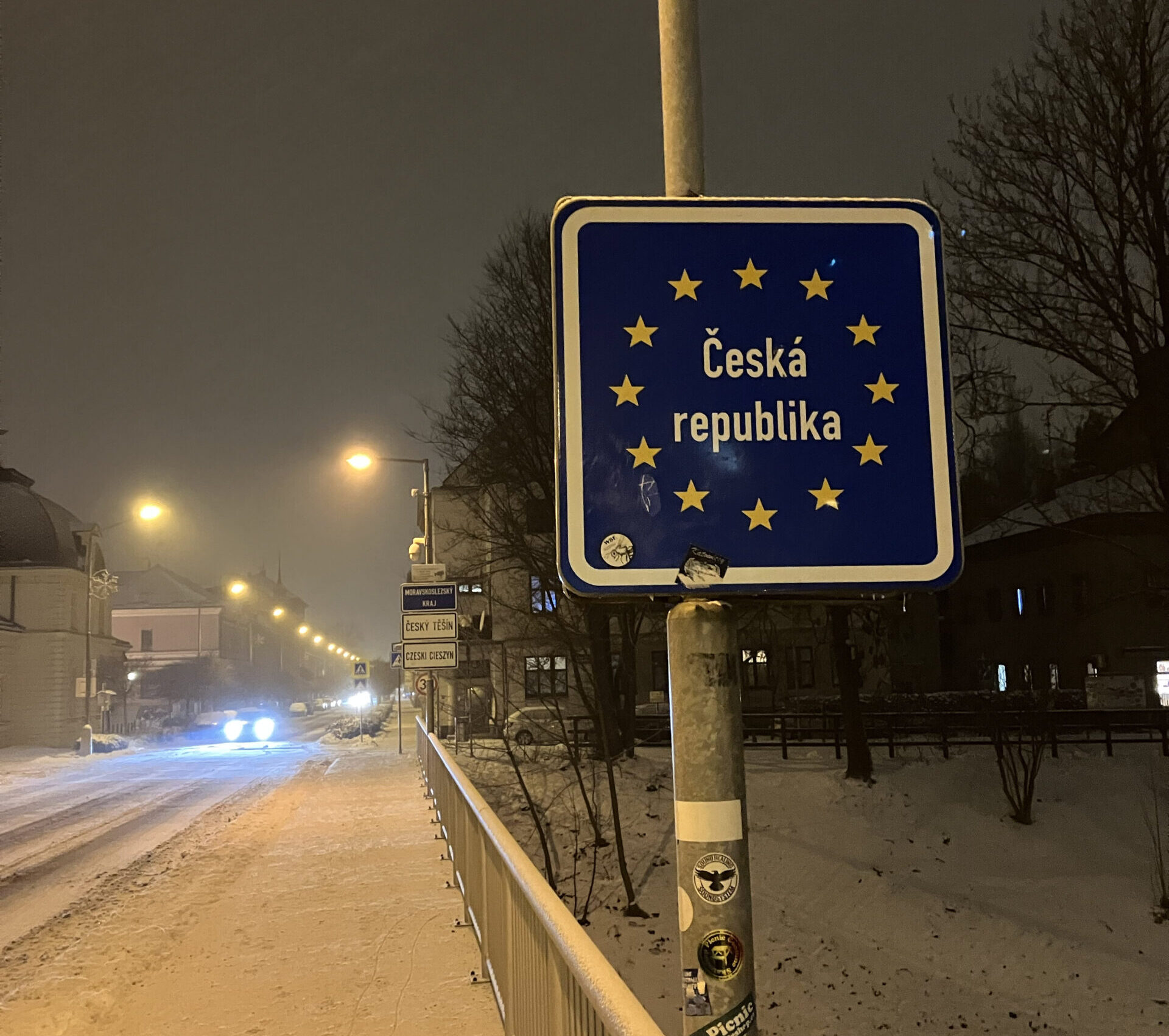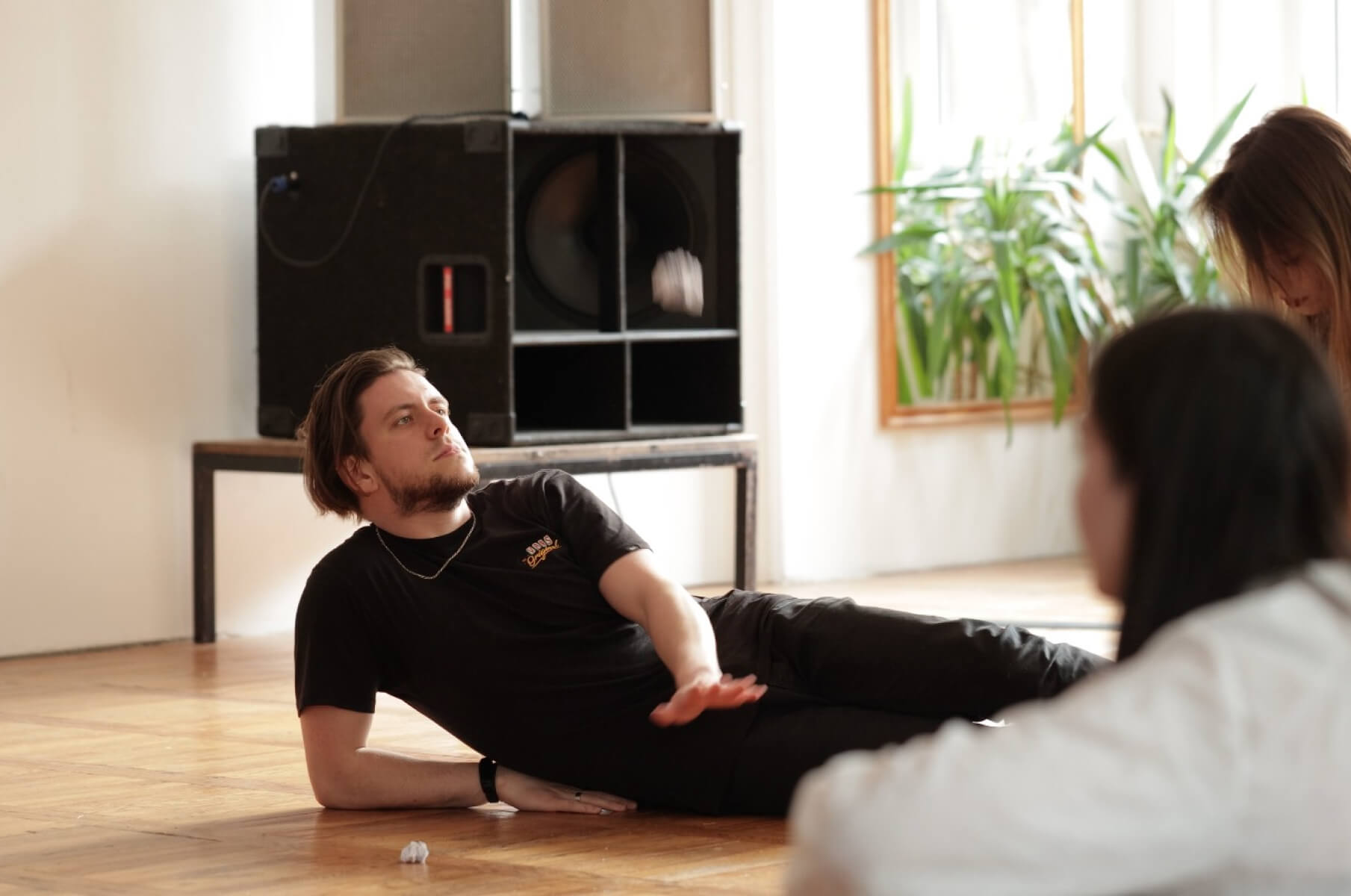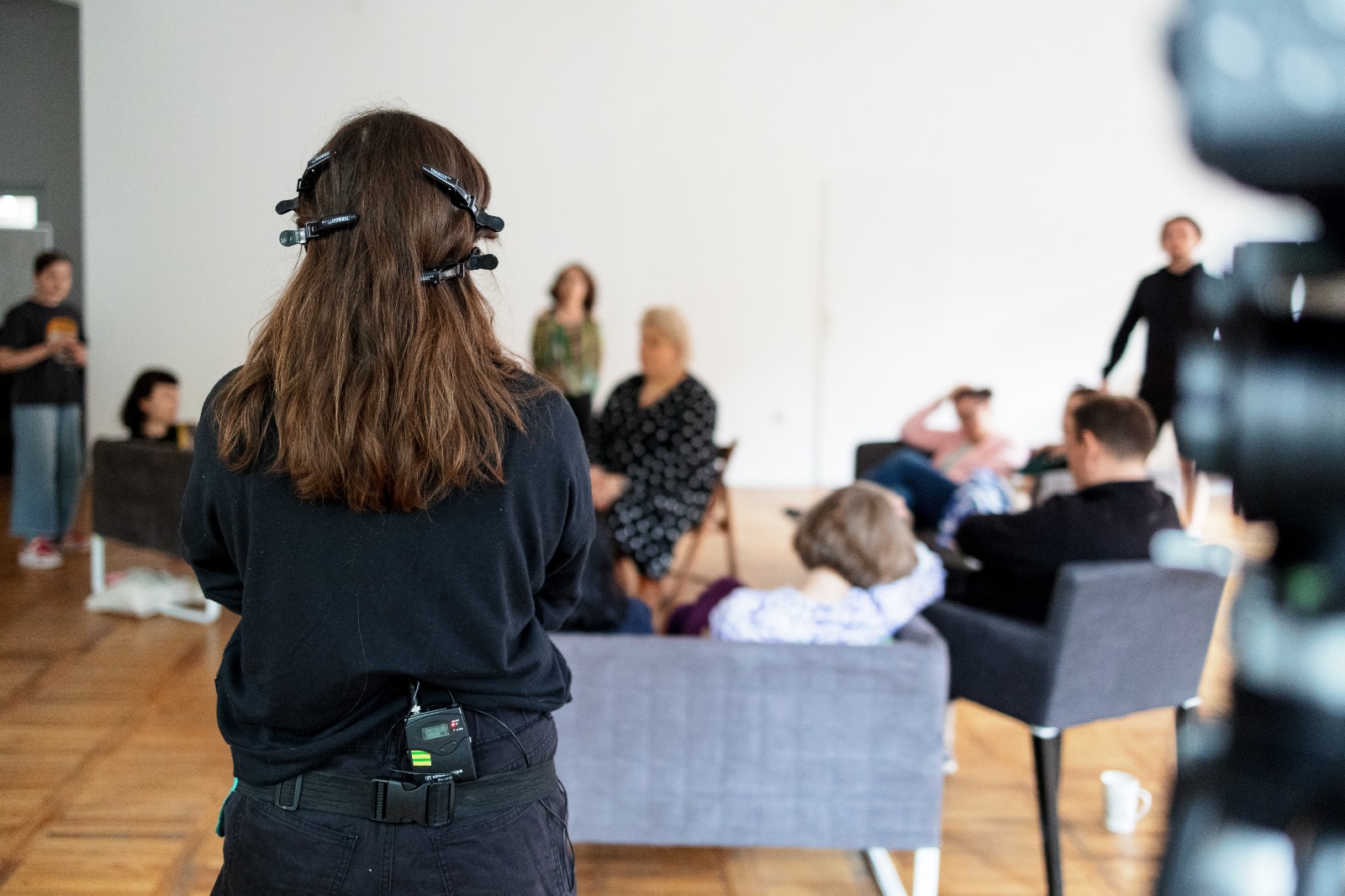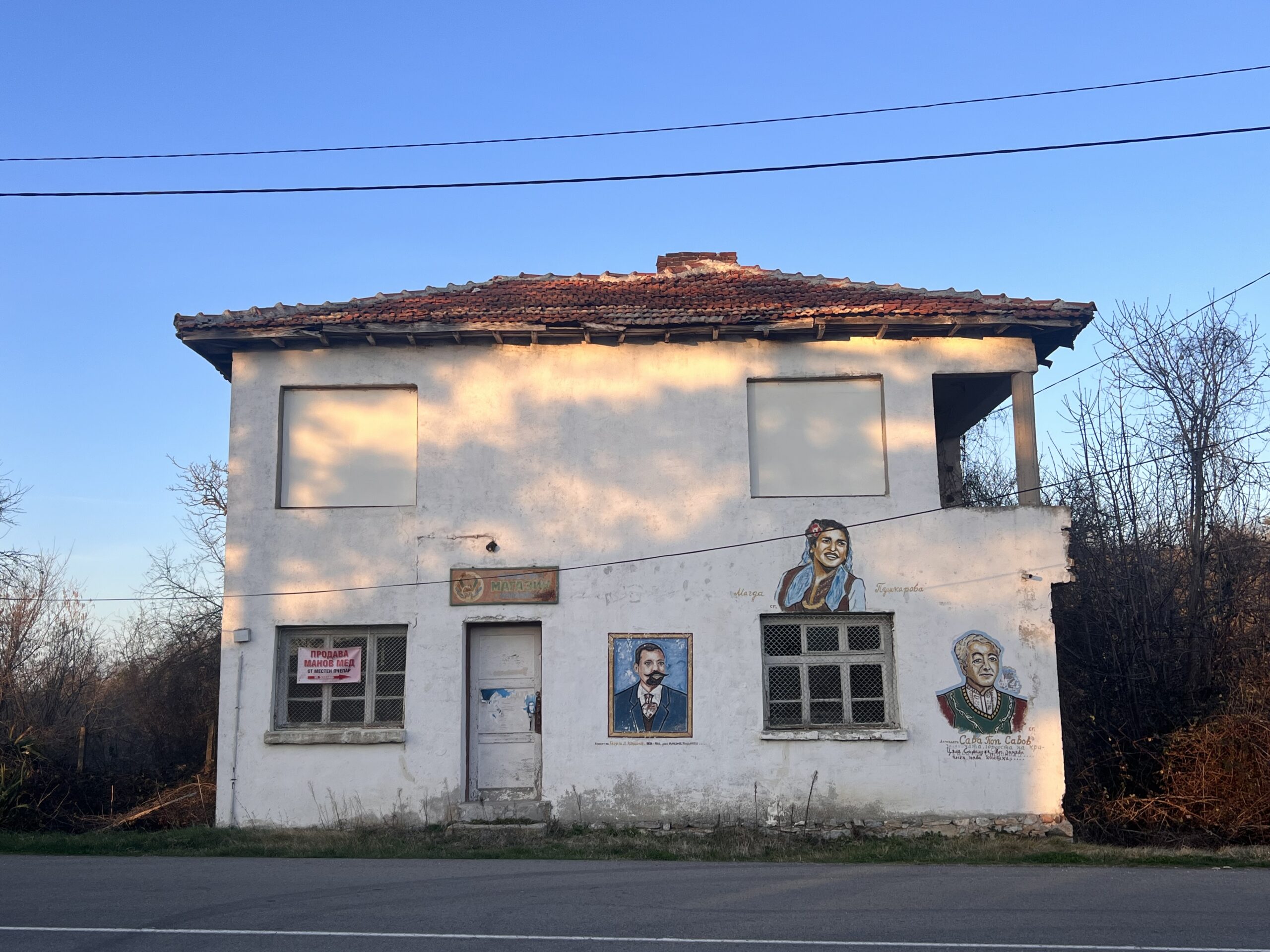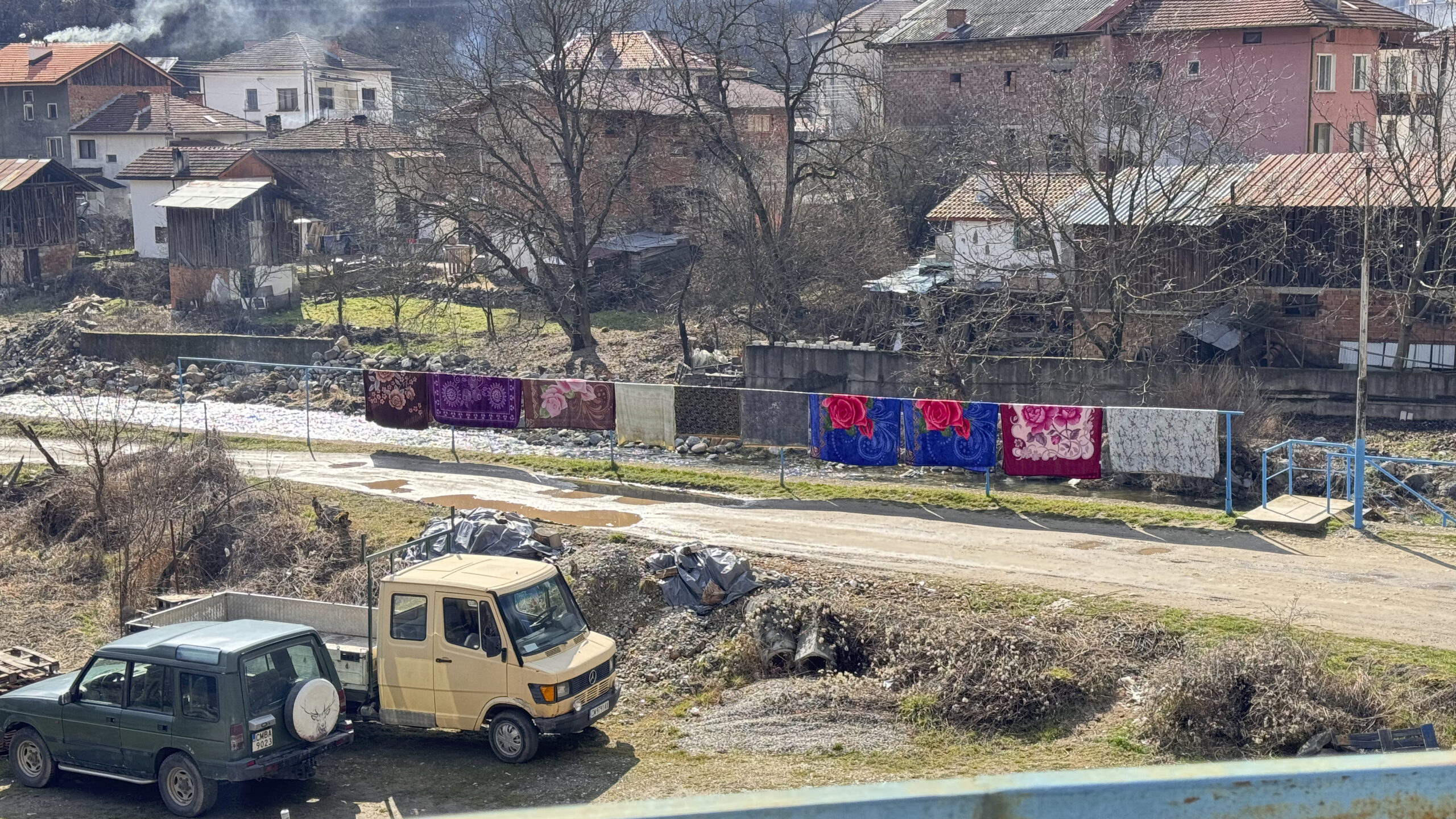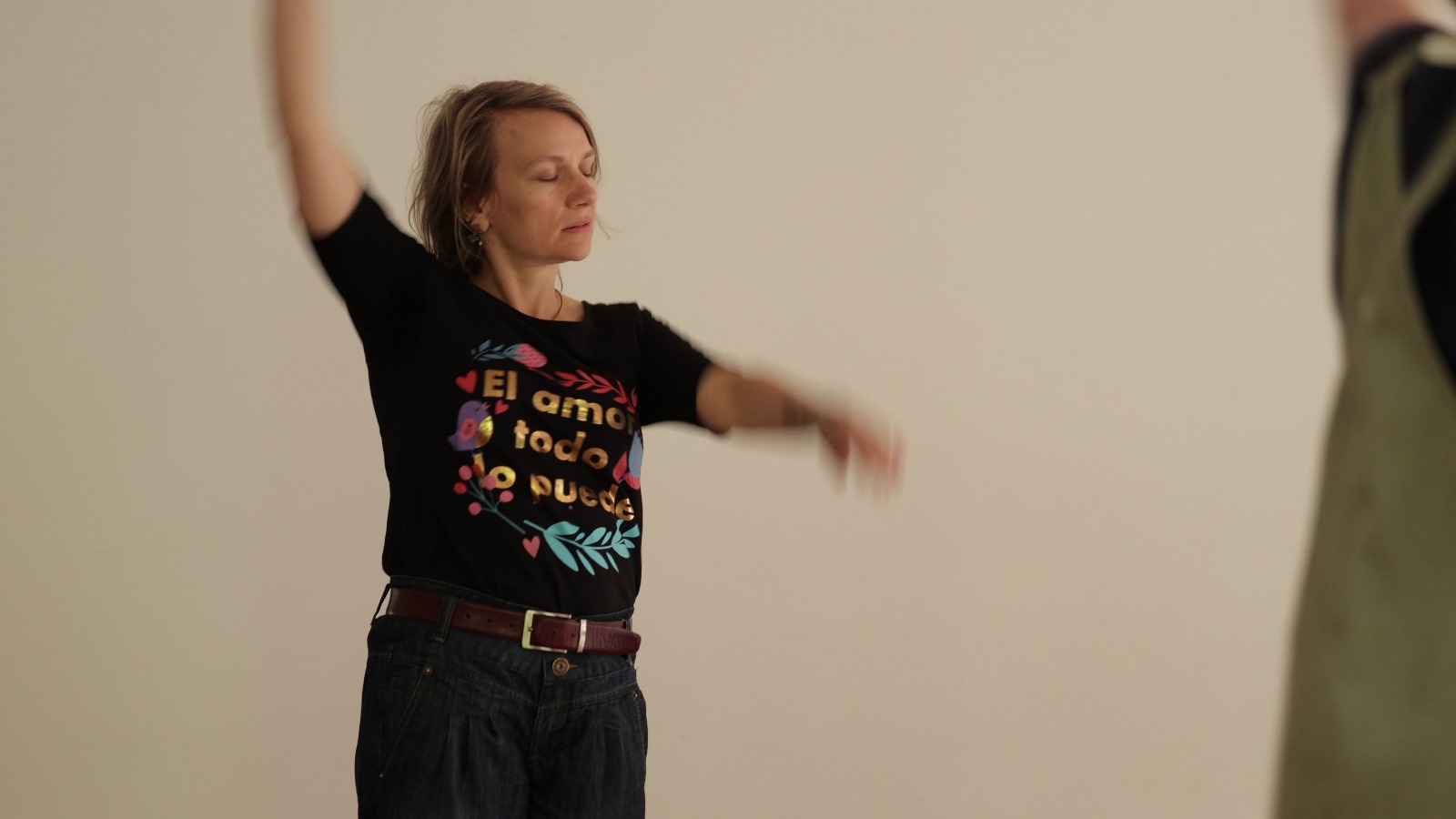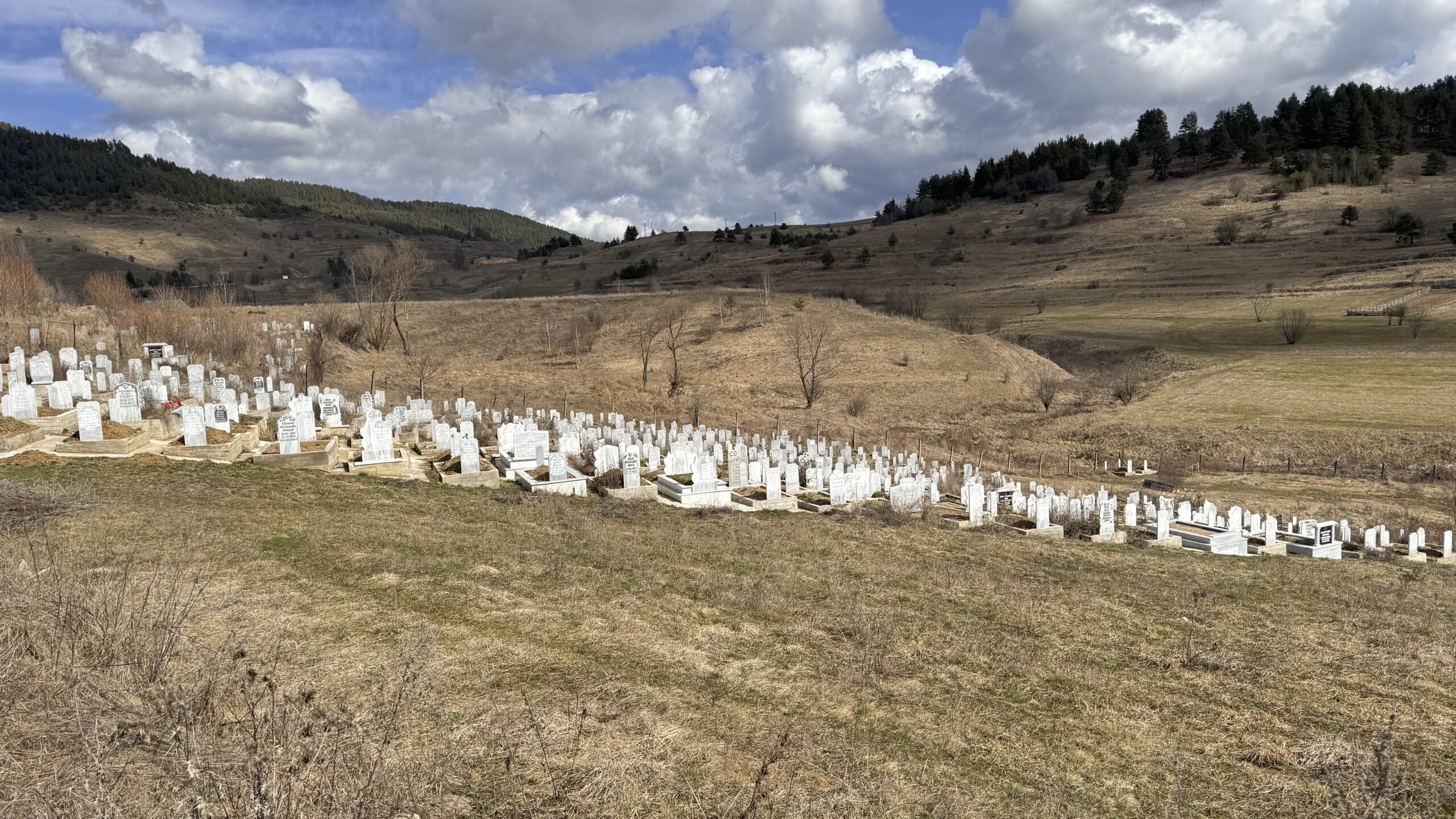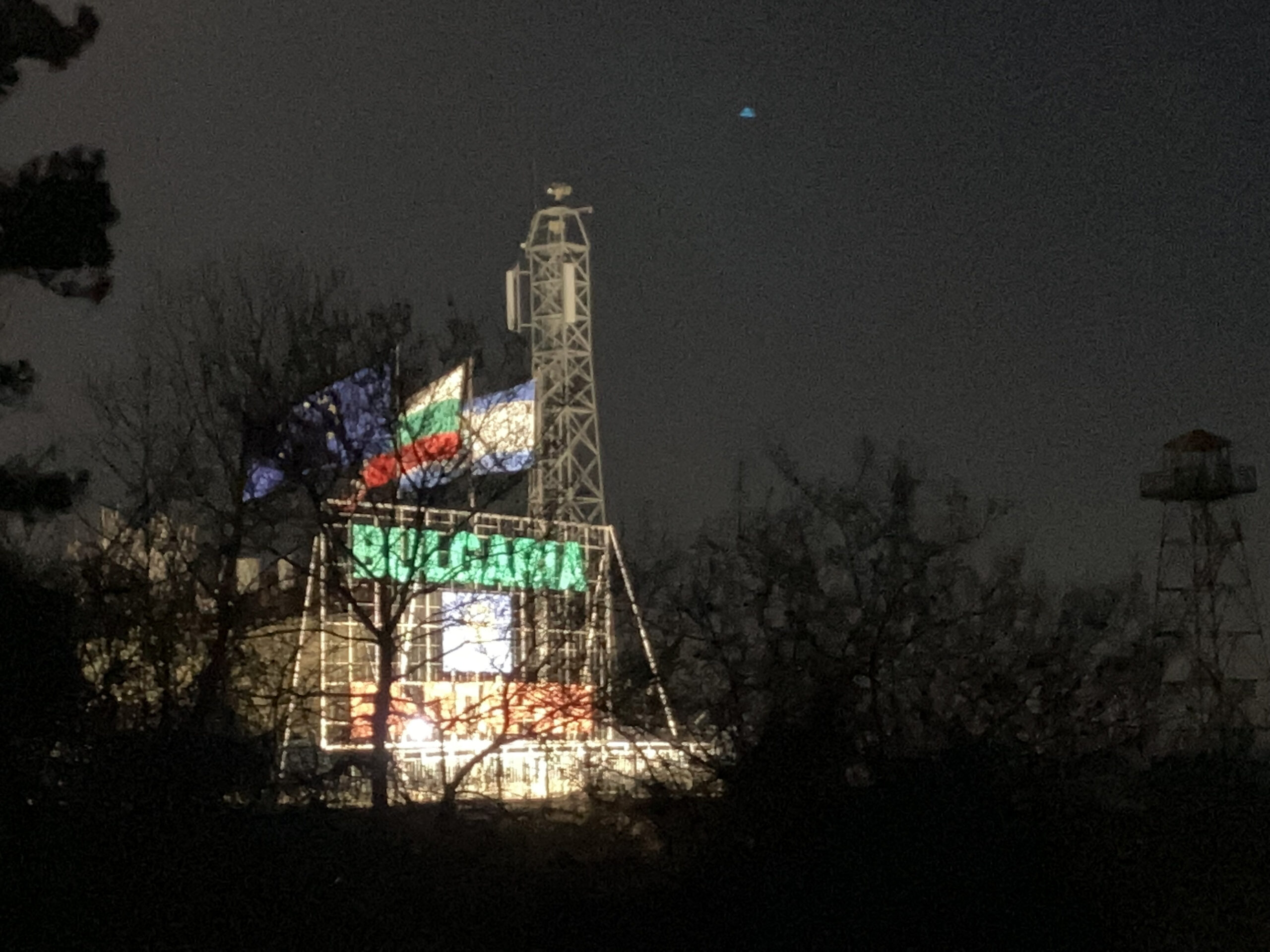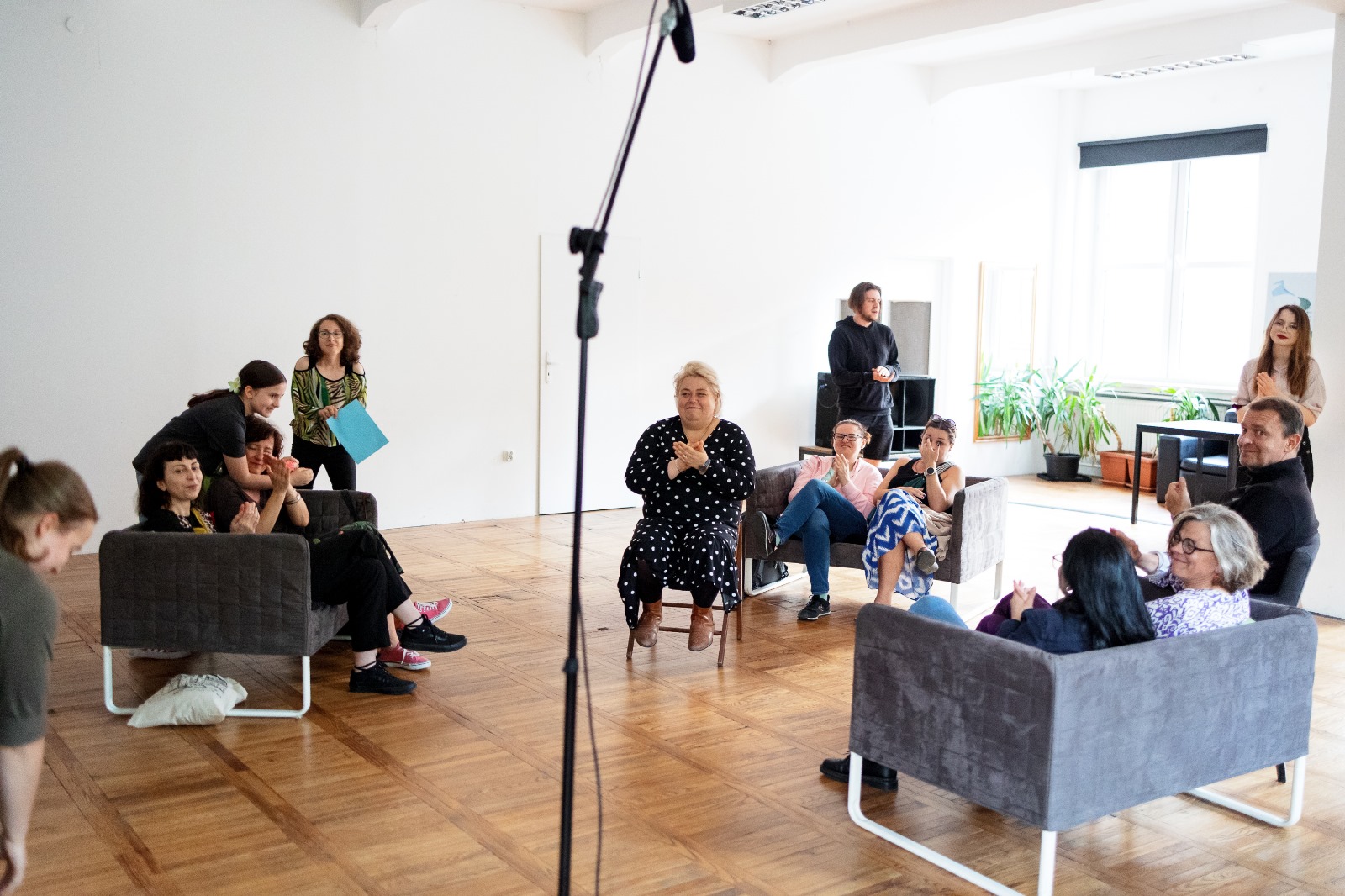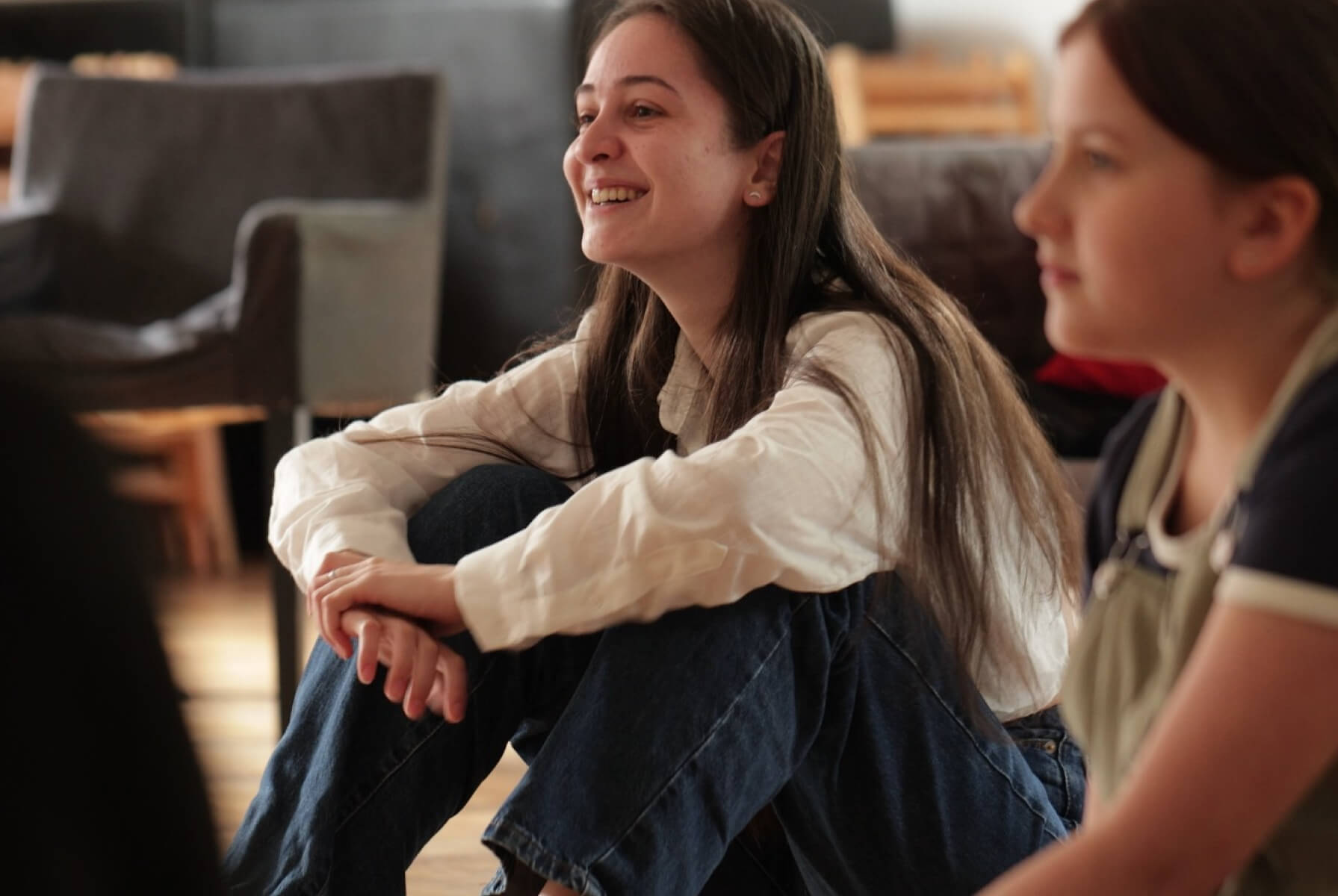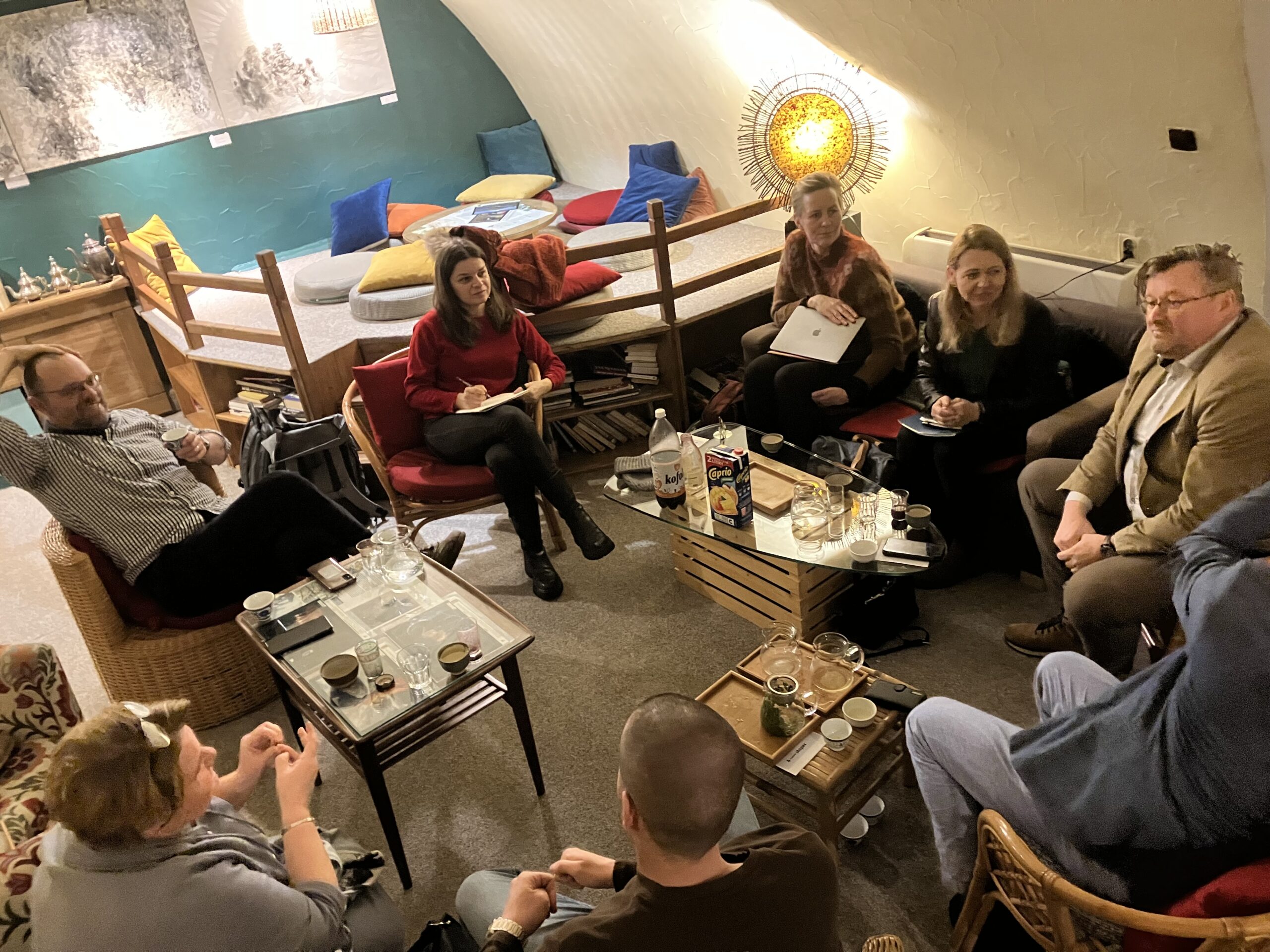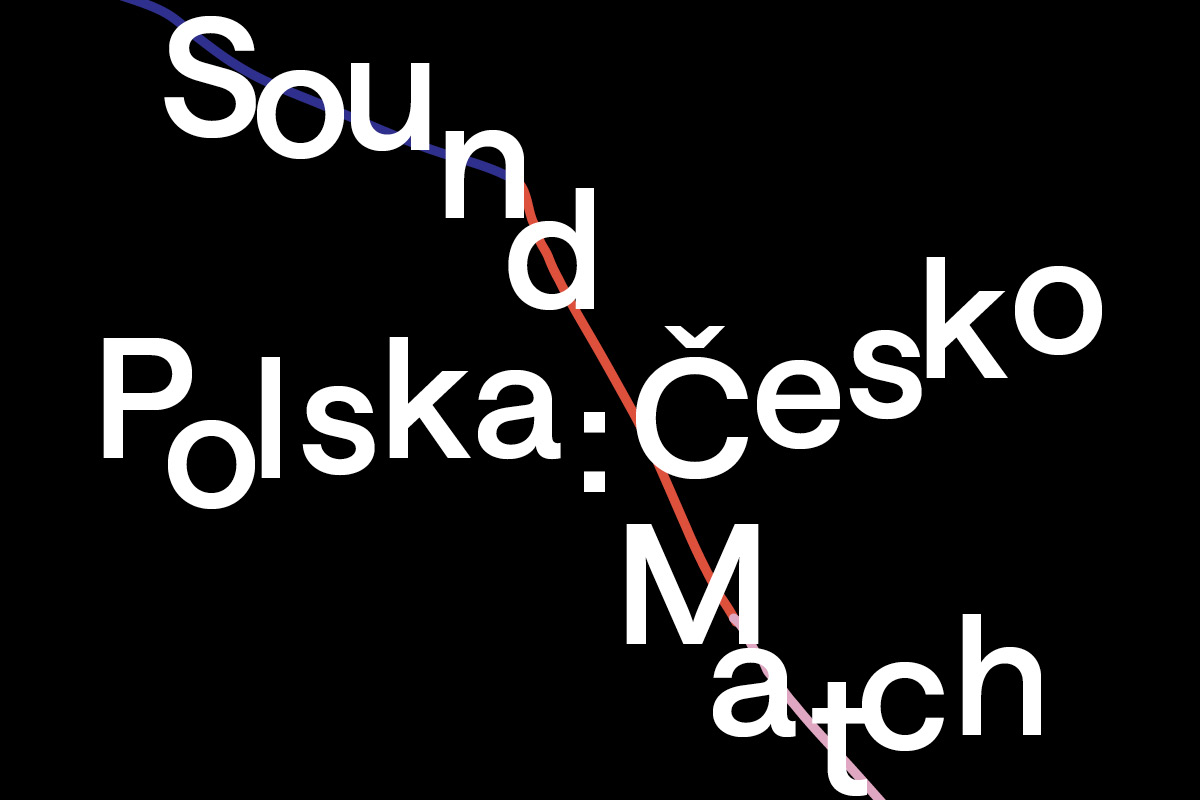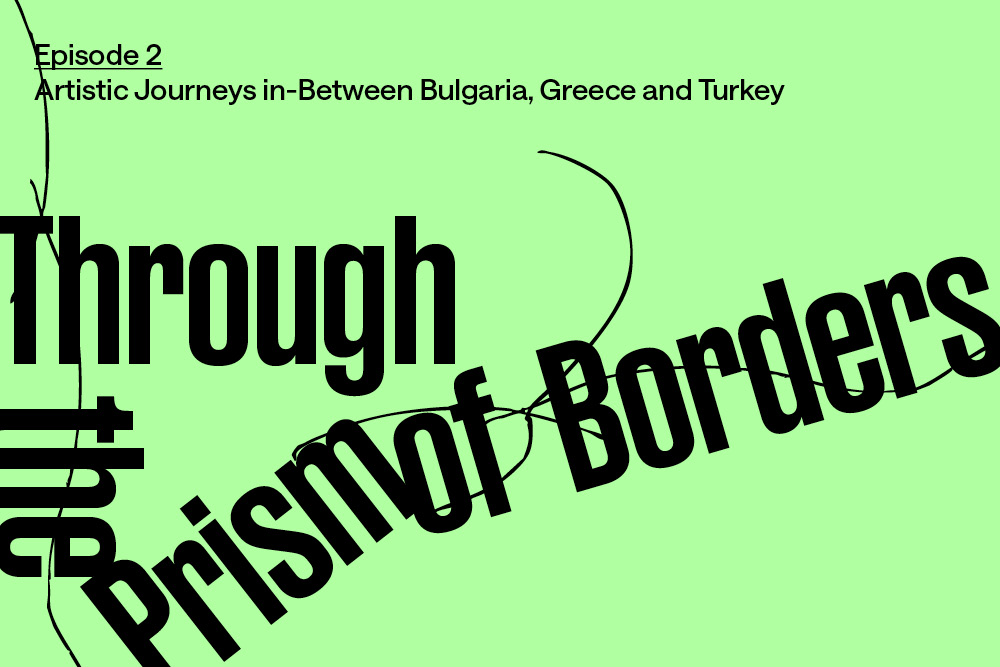Through the Prism of Borders: Five artistic interventions within the collaborative research project B-Shapes – Borders Shaping Perceptions of European Societies
B-Shapes investigates the role of borders in shaping societies, culture, heritage, and belonging. Lungomare, a cooperative for cultural production, partners with eight European universities and various institutions, including a research institute, a national museum, a foundation, a political association, and a consultancy. Through its site-specific artistic productions, Lungomare contributes to a deeper exploration of public, individual, and spatial narratives, encouraging a more nuanced understanding of borderlands.
Under the theme Through the Prism of Borders, artistic interventions take place in two European borderlands. Boris Missirkov & Georgi Bogdanov, Esra Ersen, Ivan Moudov, and ZimmerFrei explore the southeastern European border between Bulgaria, Greece, and Turkey, while Zorka Wollny works in Český Těšín/Cieszyn, a city divided by the Czechia-Poland border. These performative acts engage with the concept of ‘borderscaping,’ shifting the perception of borders from fixed lines to dynamic spaces shaped by experiences, interactions, and political possibilities.
The artistic works explore questions such as: How can border narratives be revisited and deconstructed? How do cultural and historical phenomena shape landscapes? How do borderlanders navigate their borders? What cross-cultural exchanges define European identities and influence the perception of borders?
Episode 1 – Polska : Česko | Sound Match
by Zorka Wollny
Borderland: Czechia-Poland
2–3 October 2024
Český Těšín/Cieszyn
The performative concert Sound Match in the former synagogue in Český Těšín and at the Krytyka Polityczna Center in Cieszyn, addresses the question: How does a border resonate?
In collaboration with composer Martin Dytko, Zorka Wollny explores this question through a sound-based project in Český Těšín/Cieszyn and Ostrava. By engaging local residents, the project examines bordering practices as an integral part of daily life. In this context, the border is not just a historical marker, but a dynamic space that shapes identity and belonging.
Episode 2 – Artistic Journeys In-Between Bulgaria, Greece and Turkey
Borderland: Bulgaria-Greece-Turkey
9 April–29 August 2025
National History Museum in Sofia
The exhibition Through the Prism of Borders – Episode 2: Artistic Journeys In-Between Bulgaria, Greece and Turkey at the National History Museum in Sofia examines the complex socio-political landscape of Europe’s southeasternmost border. Site-specific works by Esra Ersen, Boris Missirkov & Georgi Bogdanov, Ivan Moudov, and ZimmerFrei address remnants of the past, local border symbolism, and the experiences of those who traverse these lands. The proposed artworks reflect on suppressed voices, challenge official narratives, and propose alternative ways to perceive and remember borders. By seeing borders as thresholds rather than barriers, the project fosters dialogue and redefines borders as evolving spaces of shared histories and futures.
Artists
Polska : Česko | Sound Match
Zorka Wollny
Borderland: Czechia-Poland
How does a border resonate? Zorka Wollny invites composer and musician Martin Dytko to a sound match exploring borderscapes in Czechia-Poland. In a co-creative process with residents from Český Těšín/Cieszyn and Ostrava, they delve into narratives surrounding the meanings and materializations of bordering practices, as part of everyday life. The voice and sound-based research conceives the borderland as a place of encounter, interaction, and clash. Therefore, the border is seen not just as a point where various histories converge, but also as a space that shapes both individual and collective processes of identity formation and belonging, continuously transforming, contesting, and subverting the socio-political order. As the idea of Europe and the European Project undergo transformation, it becomes vital that diverse voices shape their emerging meaning. What futures can be imagined from here?
The performative concerts take place on October 2–3, 2024, at the former synagogue in Český Těšín as part of the city’s 33rd International Theatre Festival Without Borders, and at the Krytyka Polityczna Center in Cieszyn. These performances are featured in a video work by the artist that introduces the participants, provides insights into the production process, and further elaborates on questions surrounding bordering practices between Czechia and Poland.
Participants:
CZK Team: Kateřina Rézi Szopová, Zuzana Sekerová, Joa Ferfecki, Pepe Valíků , lead by Martin Dytko
PL Team: Weronika Masarska, Paulina Łyczek, Dawid Bury, Anita Kramarczyk & Fiona Swoboda, lead by Zorka Wollny
With the support of Natalia Kałuża, Anna Pluta and Joanna Wowrzeczka
of Krytyka Polityczna Center in Cieszyn, as well as Petra Slováček Rypienová and Stefan Mańka, directors of the 33. International Theatre Festival Without Borders.
Comissioned by Lungomare as part of the B-Shapes project.
Photos from the performative concert Sound Match by Zorka Wollny, October 2024 - Photos : Rafał Soliński
The Travelling Monument
Boris Missirkov & Georgi Bogdanov
Borderland: Bulgaria-Greece-Turkey
The work of the duo for the exhibition Through the Prism of Borders centres on a monument that has yet to appear and that will be dedicated to the people who fled the Eastern Bloc via the Bulgarian border. While Bulgaria boasts dozens of memorials dedicated to border guards, primarily along its borders with Greece and Turkey, there is not a single monument commemorating those who lost their lives attempting to escape the Eastern Bloc across these very borders – a theme particularly relevant in the context of the Cold War. Over the past three decades, this issue has been largely overlooked, with only a handful of short documentaries and articles addressing it. Consequently, the faces and names of these victims remain largely anonymous.
The Travelling Monument integrates three artistic interventions. A scaled-down maquette of an imaginary monument—a stone bridge, typical of the region, solid on one side but breaking into floating pieces at its centre. A full-size version of this monument will later be placed along the Bulgarian-Greek border. Black-and-white infrared panoramic photographs of border areas, where escape attempts were frequent, feature surface disruptions to their polished surface that challenge historical narratives. A video composed of 1970s–80s propaganda films about border guards provides historical context.
Production of the maquette: Borislav “Bucky” Tonev
Film processing and scanning: Kevork Vanlyan
Thanks to: Maria Dermendzhieva, Riza Brahimbashev, Mustafa Brahimbashev, Hayri Milezimov, Georgi Buklev, Nadezhda Georgieva
“Our work in the B-Shapes project aims to challenge the dominant narratives surrounding borders and monuments…We propose an anti-monument dedicated to those who lost their lives crossing borders, inviting reflection on marginalised histories… Archives play a crucial role, destabilising established narratives and offering alternative readings…By focusing on Europe’s margins, we open up a space to rethink European identity, challenging the East-West divide and embracing cultural transformation.” (from the interview between Boris Missirkov & Georgi Bogdanov and the curators, February 2025)
Comissioned by Lungomare as part of the B-Shapes project.
Photos from the artistic research by Georgi Bogdanov and Boris Missirkov, June 2024, site-visit in the Border Region Bulgaria, Greece
Border Walks
Ivan Moudov
Borderland: Bulgaria-Greece-Turkey
For the exhibition Through the Prism of Borders Ivan Moudov creates three works that engage with national symbols, landscapes of waste and more-than-human ecosystems. By bringing these themes and relationships from the border regions to Sofia, the artist invites viewers to critically confront issues that may initially seem remote, yet which ultimately impact us all. The works prompt a re-examination of the dynamics between centre and periphery, the visible and the repressed, as well as symbolic boundaries and often-overlooked interconnections.
Sound Flags, 2025
Ivan Moudov, in collaboration with sound artist Sibin Vassilev, exploits AI to transform the images of the flags of Bulgaria, Greece, and Turkey into sound, which is then emitted through speakers mounted on top of three poles next to the National History Museum.
Border Flowers, 2025
Border Flowers is the upshot of the artist’s border walks along the Bulgaria-Turkey border, where plastic waste is dispersed across the landscape. The collected plastics are arranged in front of the National History Museum, resembling flowers from a distance – a deceptive beauty born from waste. By emphasising that 95% of plastic is not recycled, the artist challenges the concept of borders, drawing a parallel between borders and waste as human constructs that shape both landscapes and lives, ultimately questioning our illusions of control over nature.
B-Shapes Repellent, 2025
In the context of the border walks, the artist collects the fly agaric mushroom (Amanita muscaria), along the Bulgaria-Turkey border, where geopolitical divisions intertwine with the land and its natural resources. The creation of B-Shapes Repellent, on sale in the museum bookshop, made from these fungi and Strandja’s herbs combines traditional knowledge with practical solutions, highliting the interconnectedness of the ecosystems.
“As a kid, the border always fascinated me. Growing up during a time when travel was restricted, crossing the border – both literally and metaphorically – felt unachieveable. In the late 1990s, as I began traveling for work, I became a smuggler of art, alcohol, and goods, highlighting the border’s dual nature as a site of control and creativity. Over time, as restrictions loosened, the border became a space of vulnerability and exploitation for migrants, a site where power, identity, and morality intersected.” (from the interview between Ivan Moudov and the curators, February 2025)
Comissioned by Lungomare as part of the B-Shapes project.
Photos from the artistic research by Ivan Moudov, August 2024, site-visit in the Border Region Bulgaria, Greece
Traces of the Past, Ghost of the Future
Esra Ersen
Borderland: Bulgaria-Greece-Turkey
For the exhibition Through the Prism of Borders, Esra Ersen’s work examines the interplay between personal and collective identities, illustrating how borders not only define territory but also construct narratives of belonging and exclusion. Eastern and Southeastern Europe has historically been marked by great linguistic and ethnic diversity. While this diversity could be seen as a source of cultural wealth, it stands in contrast to border demarcations established in the nineteenth century, which sought to create defined spaces for homogeneous communities. The work of Esra Ersen is presented in handmade folders inspired by the Sicil-i Ottoman period registry books, selected by the artist during her research at the St Cyril and Methodius National Library in Sofia. These Sicil-i registers are incoming-outgoing logs maintained by the qadi or his deputy in a particular settlement, documenting copies of all orders received locally from higher authorities, including the Sultan’s office. They represent an exceptionally valuable historical source, offering insights into political relations with other states, matters related to the Ottoman Empire, inventories of deceased estates, property status, lists of prices for goods, property disputes, local construction, repairs, waqf properties and other key issues. By using handmade folders modelled on these registers, Ersen employs an archival, tactile approach that connects contemporary themes to historical forms of record-keeping.
“There is a discrepancy between the official historiography and the suppressed experiences of marginalised groups… These gaps in collective memory are often shaped by political interests that create selective narratives… Art plays an important role in making these unspoken stories visible, opening up new perspectives and fostering space for empathy and reflection, which transcend the boundaries of official narratives.” (from an interview between Esra Ersen and the curators, February 2025)
Comissioned by Lungomare as part of the B-Shapes project.
Photos from the artistic research by Esra Ersen, March 2024, site-visit in the Border Region Bulgaria, Greece
The Answer Is Out There
ZimmerFrei, Anna de Manincor
Borderland: Bulgaria-Greece-Turkey
In Anna de Manincor’s narrative approach, the distinction between a territory and its borders dissolves, as the natural landscape continuously extends without regard for artificial divisions. The concept that “nature knows no boundaries” emerges as a central theme, interweaving personal narratives with the fluidity of the environment. The project for the exhibition Through the Prism of Borders focuses on the sparsely populated region of Strandja, specifically the Rezovo River area, which serves as the natural division between Bulgaria and Turkey, as well as the coast of the Black Sea, one of Europe’s southernmost borders. Residents of this borderland consistently speak of barriers – both physical and metaphorical. These barriers are not mere geographical demarcations; instead, they are intimately intertwined with the identities of the individuals who inhabit this space, shaped by the complex relationship between the land and its people. In this liminal space, the past and its enduring legacies remain palpable, persistent and impossible to overlook. A deep sense of rootedness pervades these narratives, even though the gaze may settle on a distant horizon. This unchanging viewpoint is not indicative of stagnation, but rather speaks to the resilience of those who reside within it. The film and its narrative layers intertwine the experiences of these ‘borderlanders’, highlighting how their lives are inextricably influenced by the surrounding territory. Their stories, laden with historical significance, challenge the reductive notion of borders, revealing how the land itself preserves stories and memories that extend well beyond the lines of a map. Through this lens, Anna de Manincor’s work invites audiences to reconsider borders as more than just lines on a map, but as powerful forces that shape human experience, provoking new questions and leaving lasting emotional traces.
For the exhibition Through the Prism of Borders, its current members Anna de Manincor (artist, director, filmmaker) and Massimo Carozzi (musician, sound designer) collaborated with Ivano Lollo (filmmaker), Nikol Delcheva (interpreter), Roberto Beani, Massimiliano Bartolini and Paolo Lancellotti (collaborators to the editing, colour correction and post-production), with the indispensable contribution of Mirco Santi (Home Movies) and Luca Pignatti (Shado): two institutions focusing on analogue film recording.
“More than borders, we are interested in territories, their discontinuity, the zones in which different perceptions and ways of sensing them to be foreign or familiar overlap. Borders are ripples that we insist on making for purposes that do us no credit.” (from an interview between Anna de Manincor and the curators, February 2025)
Comissioned by Lungomare as part of the B-Shapes project.
Photos from the artistic research by ZimmerFrei, February 2024, site-visit in the Border Region Bulgaria, Greece and Turkey
Borderlands
